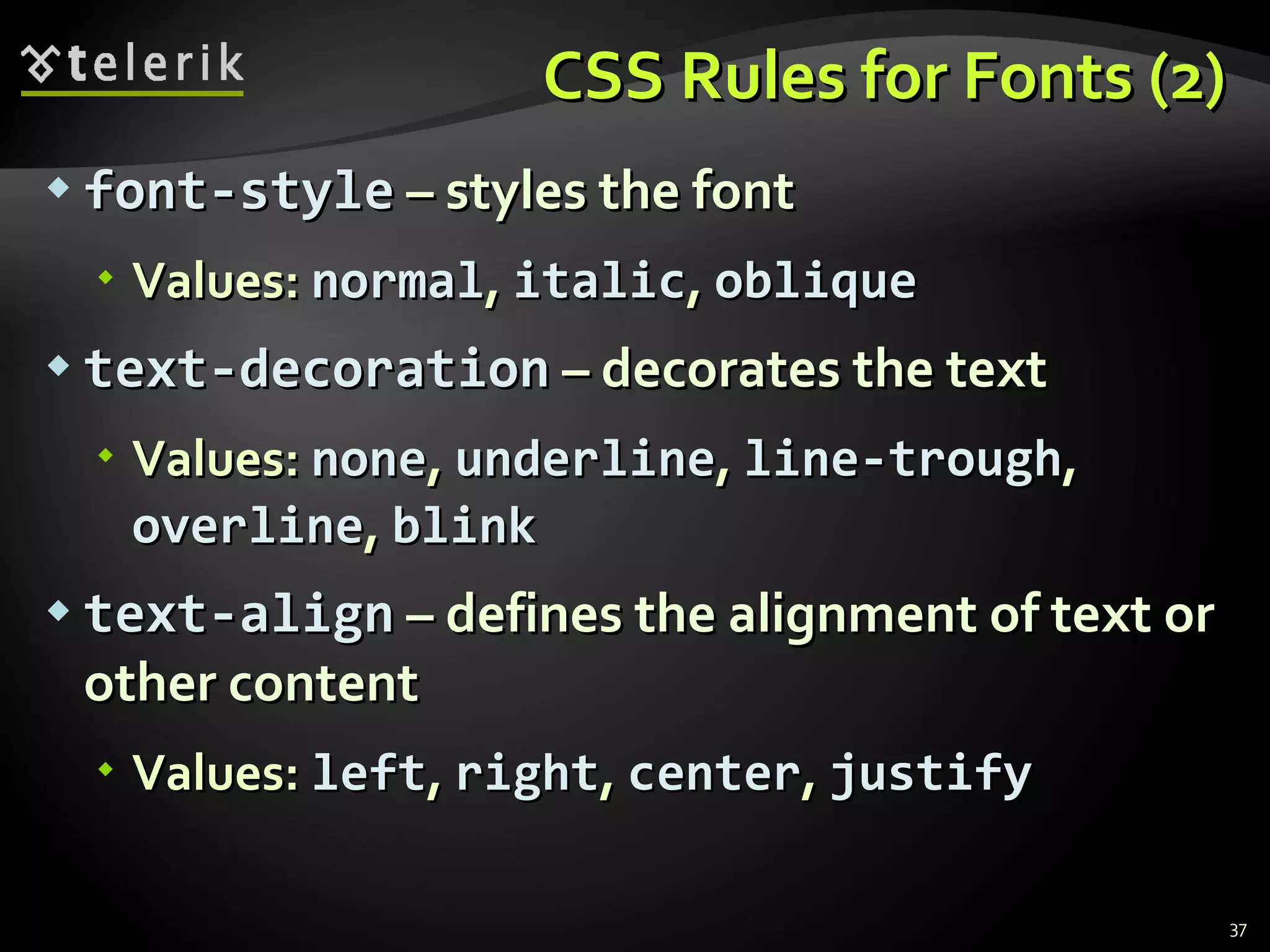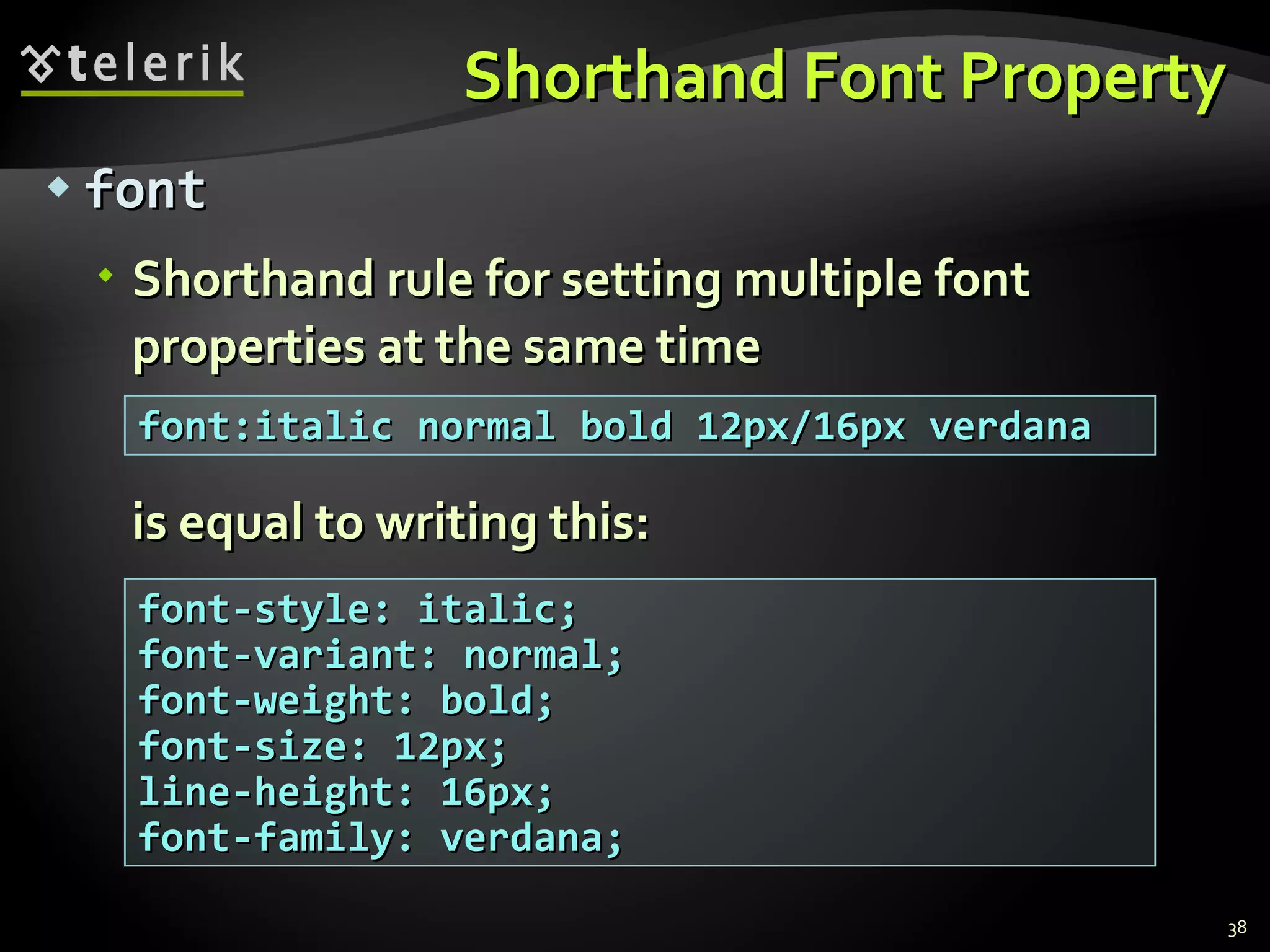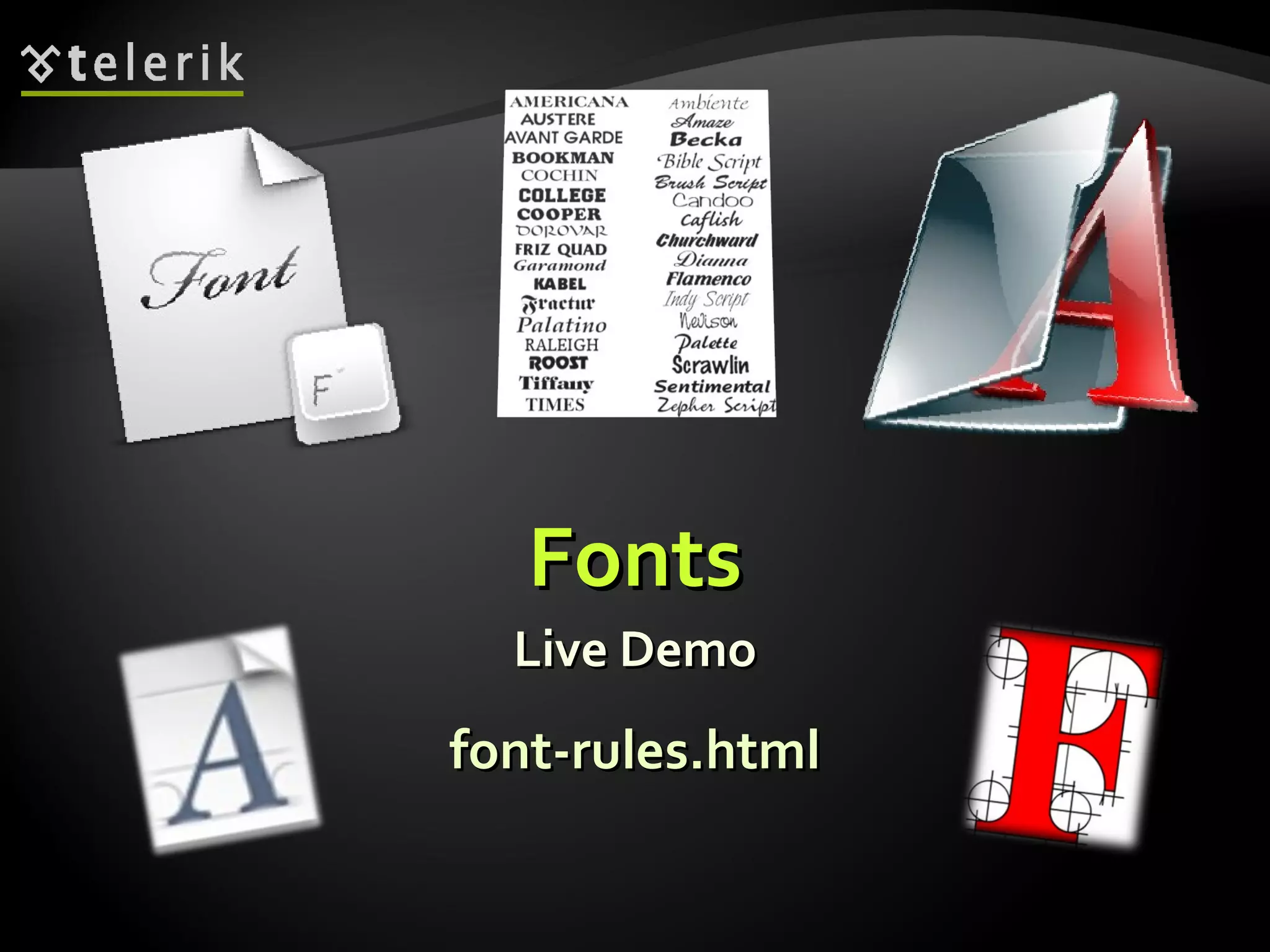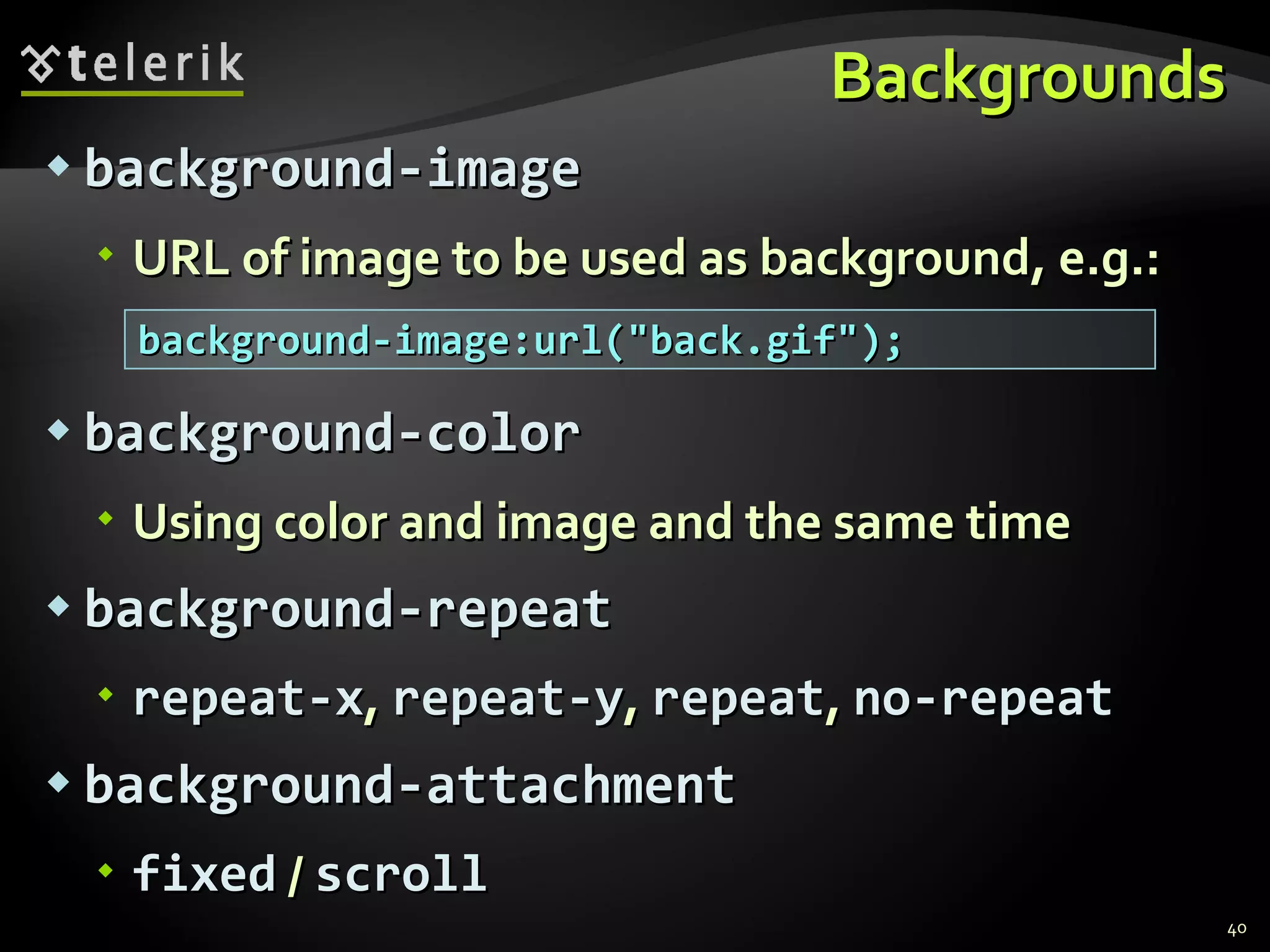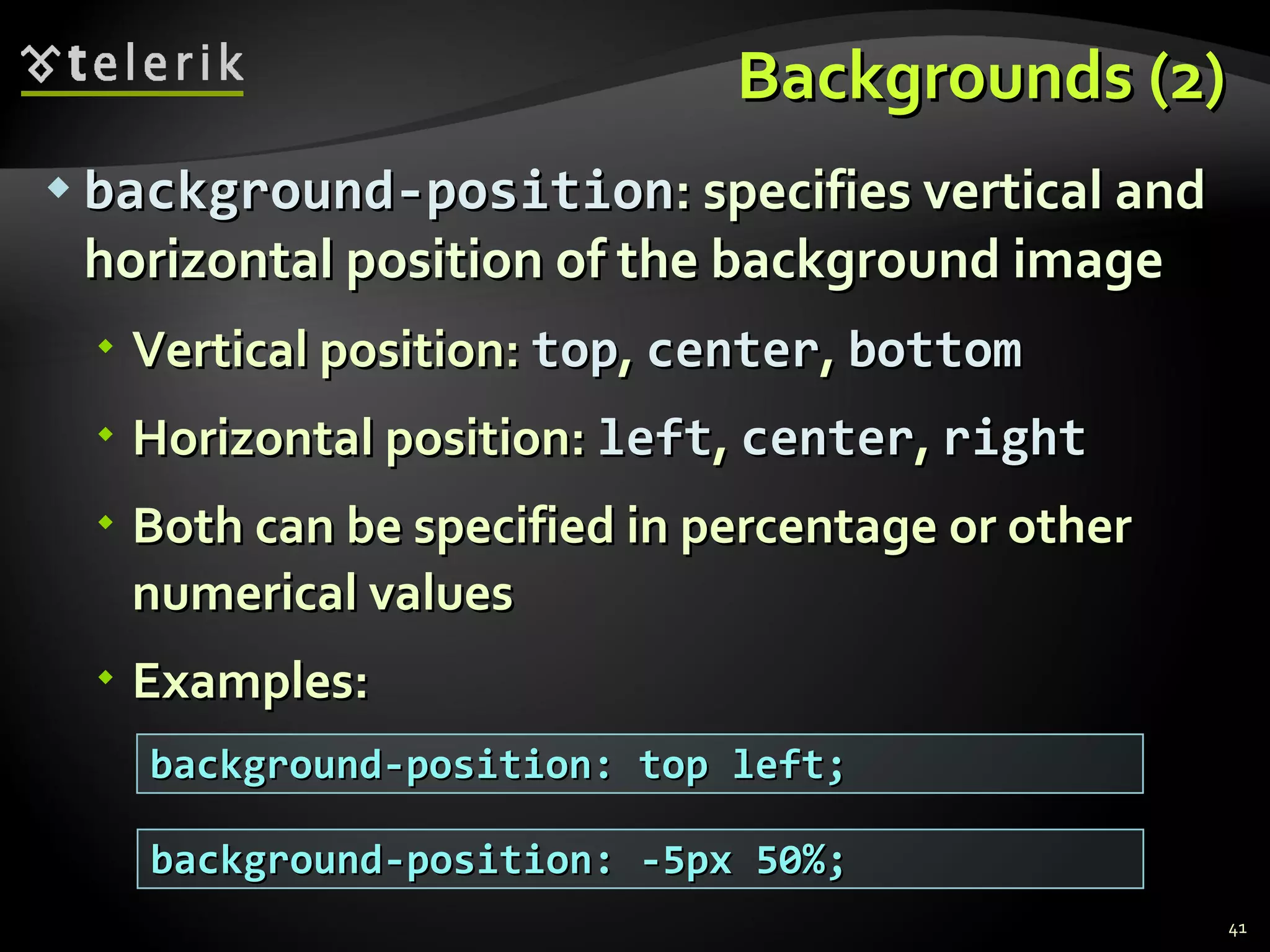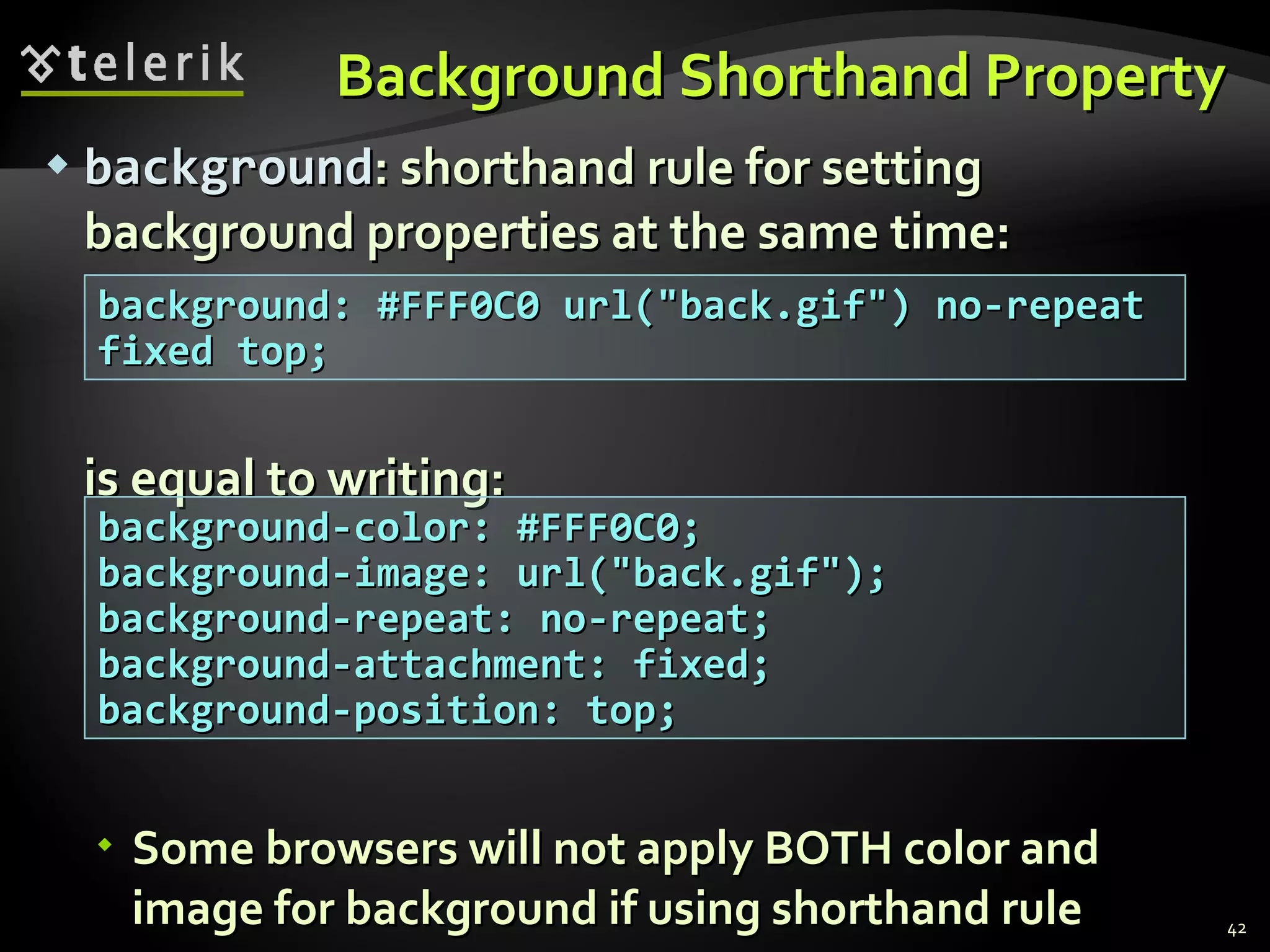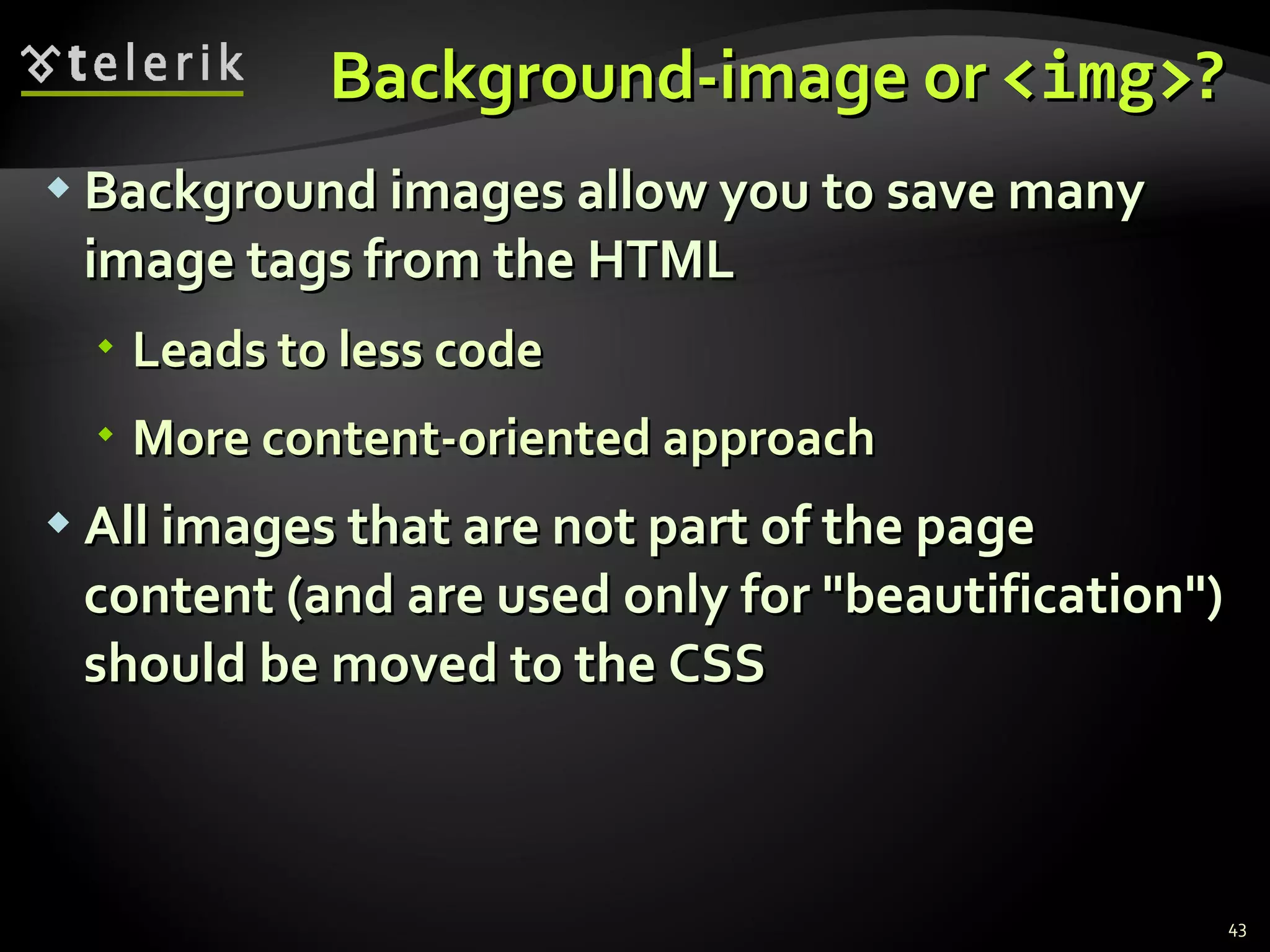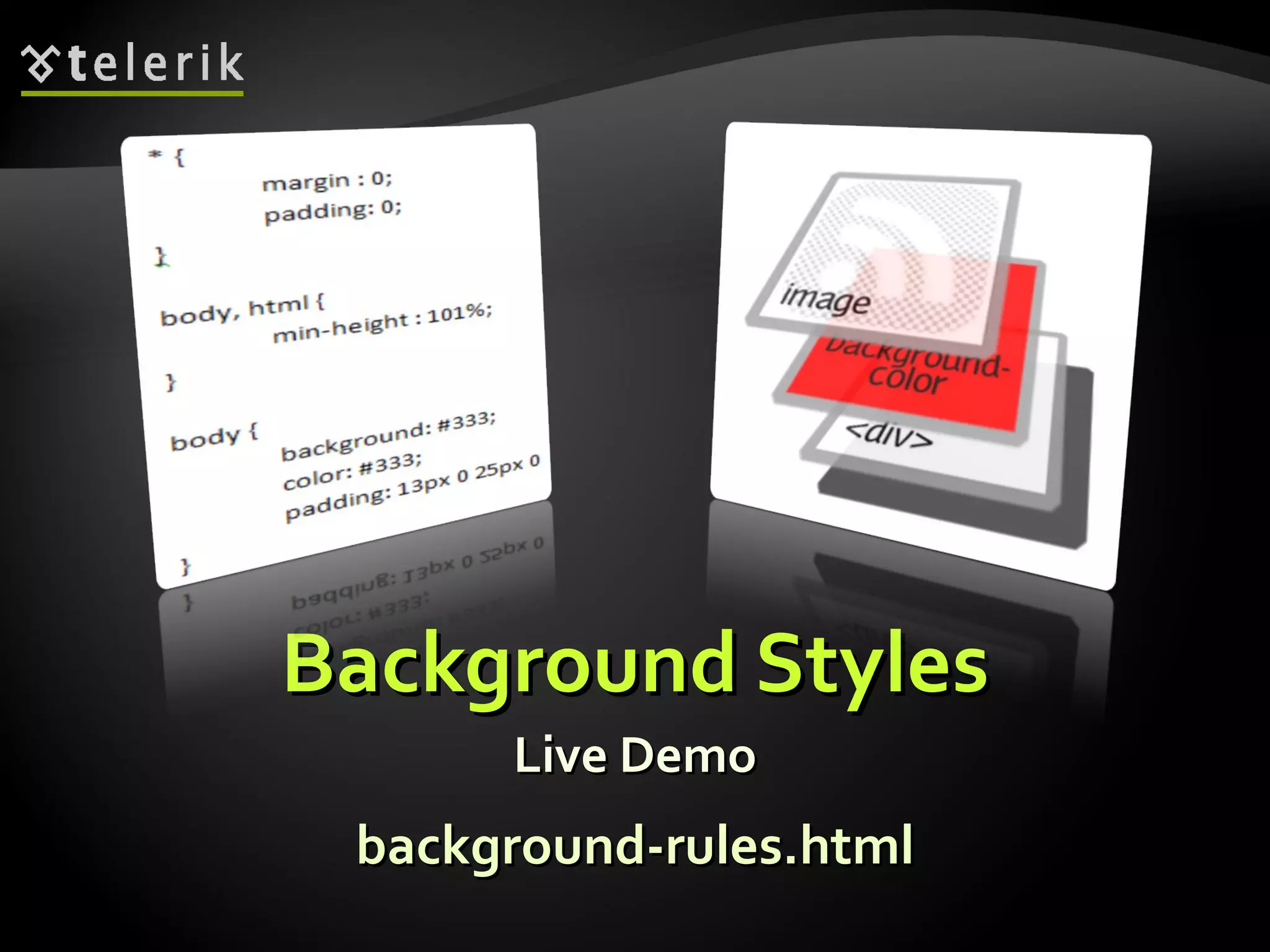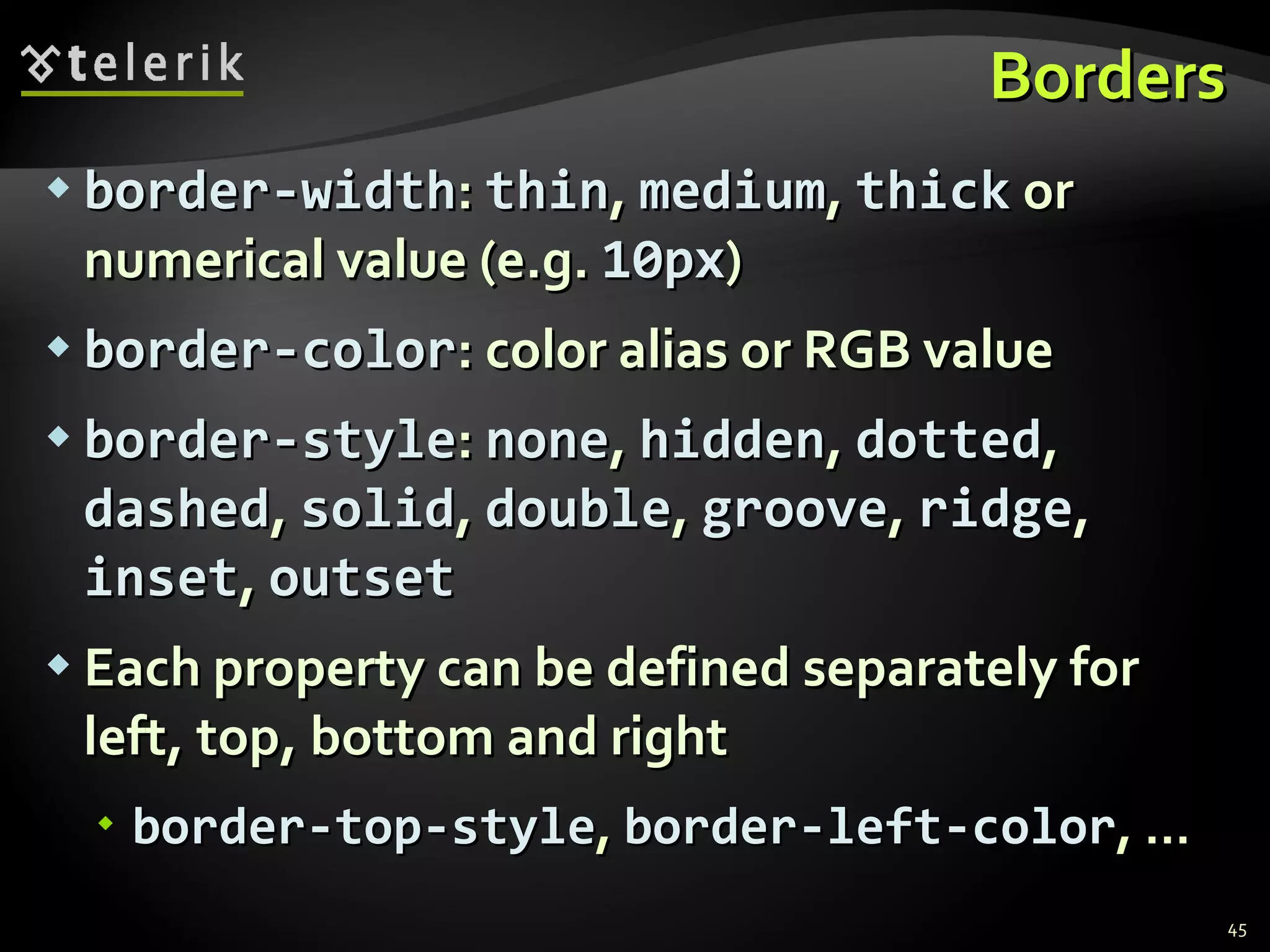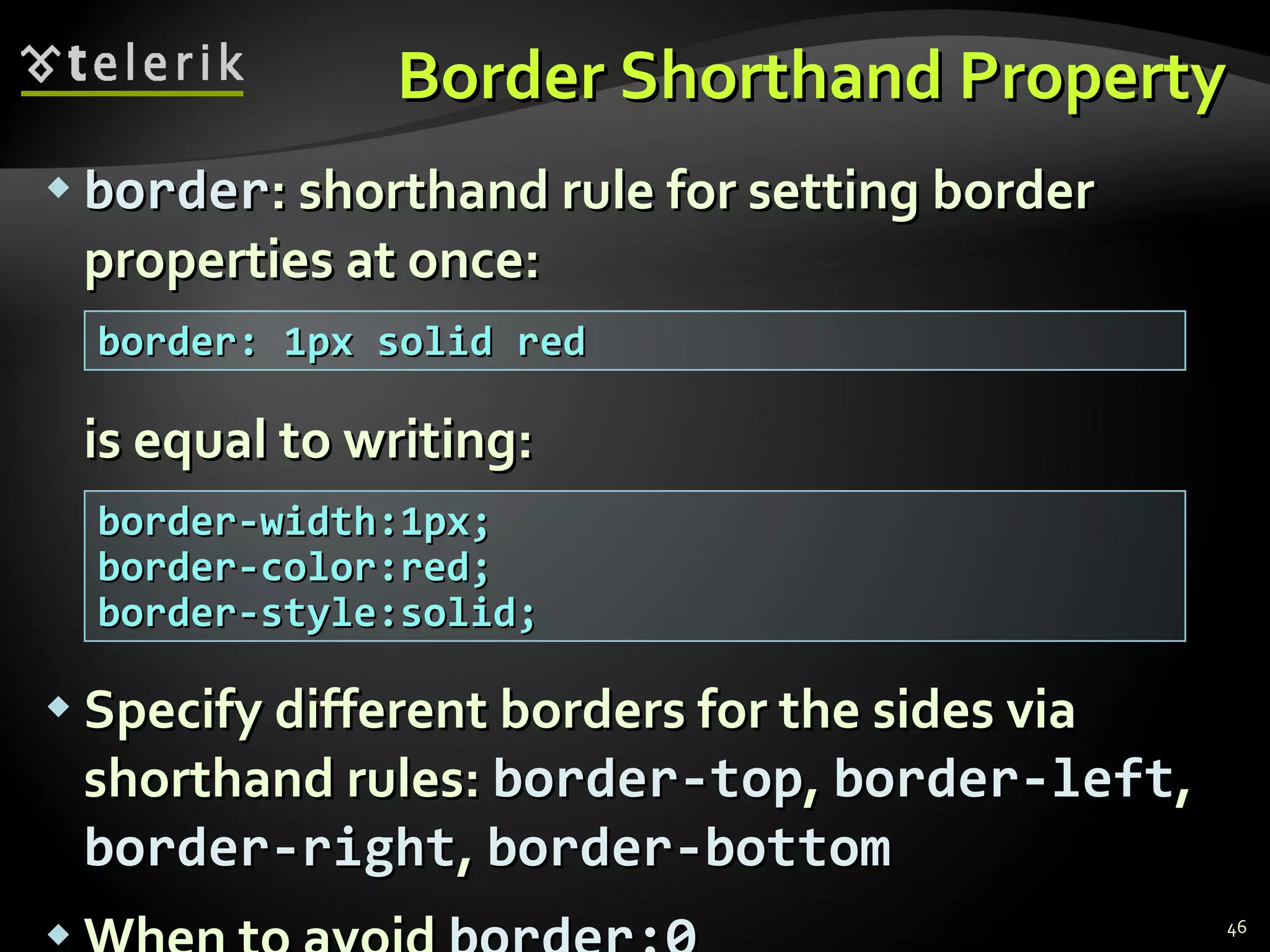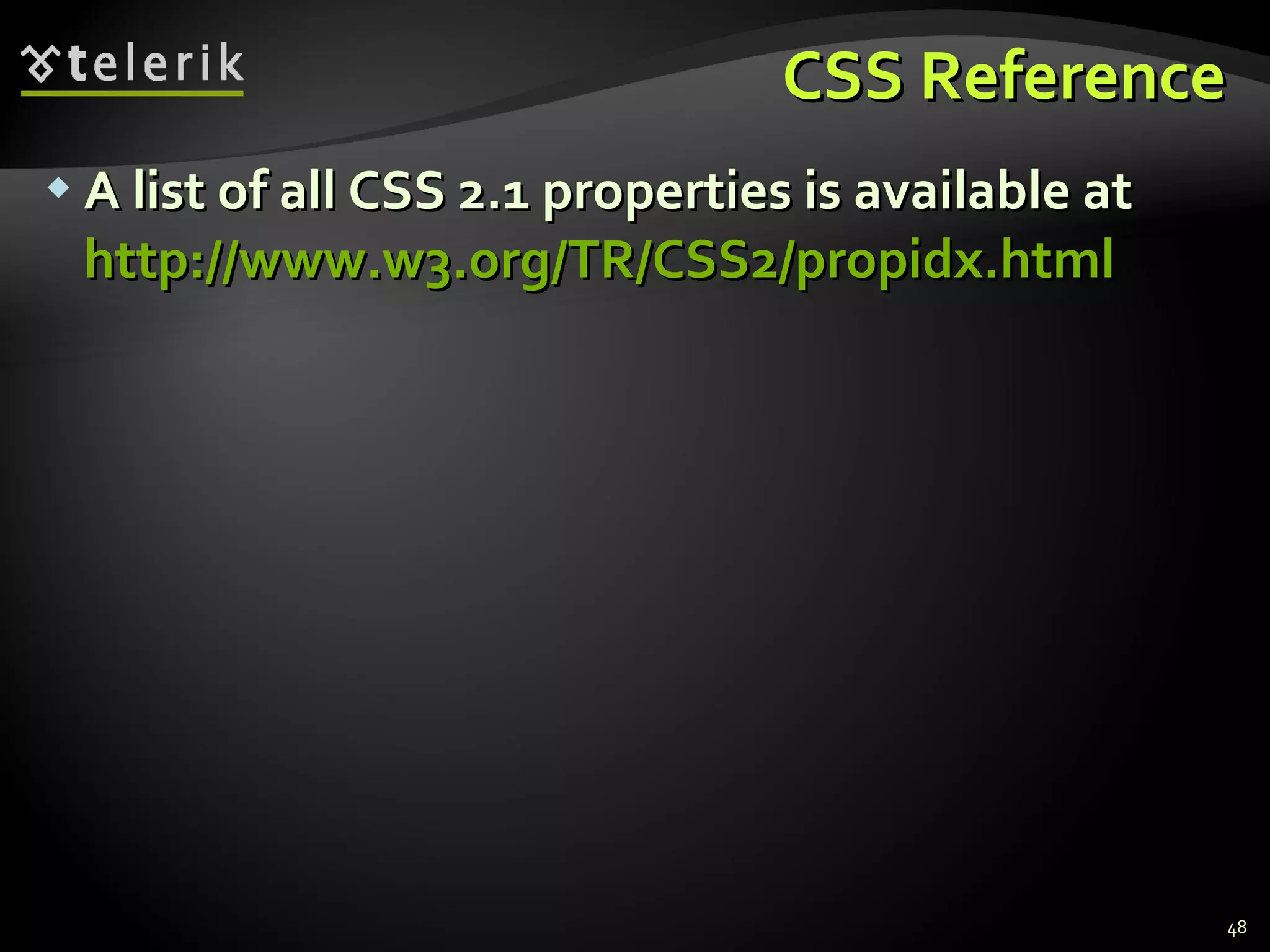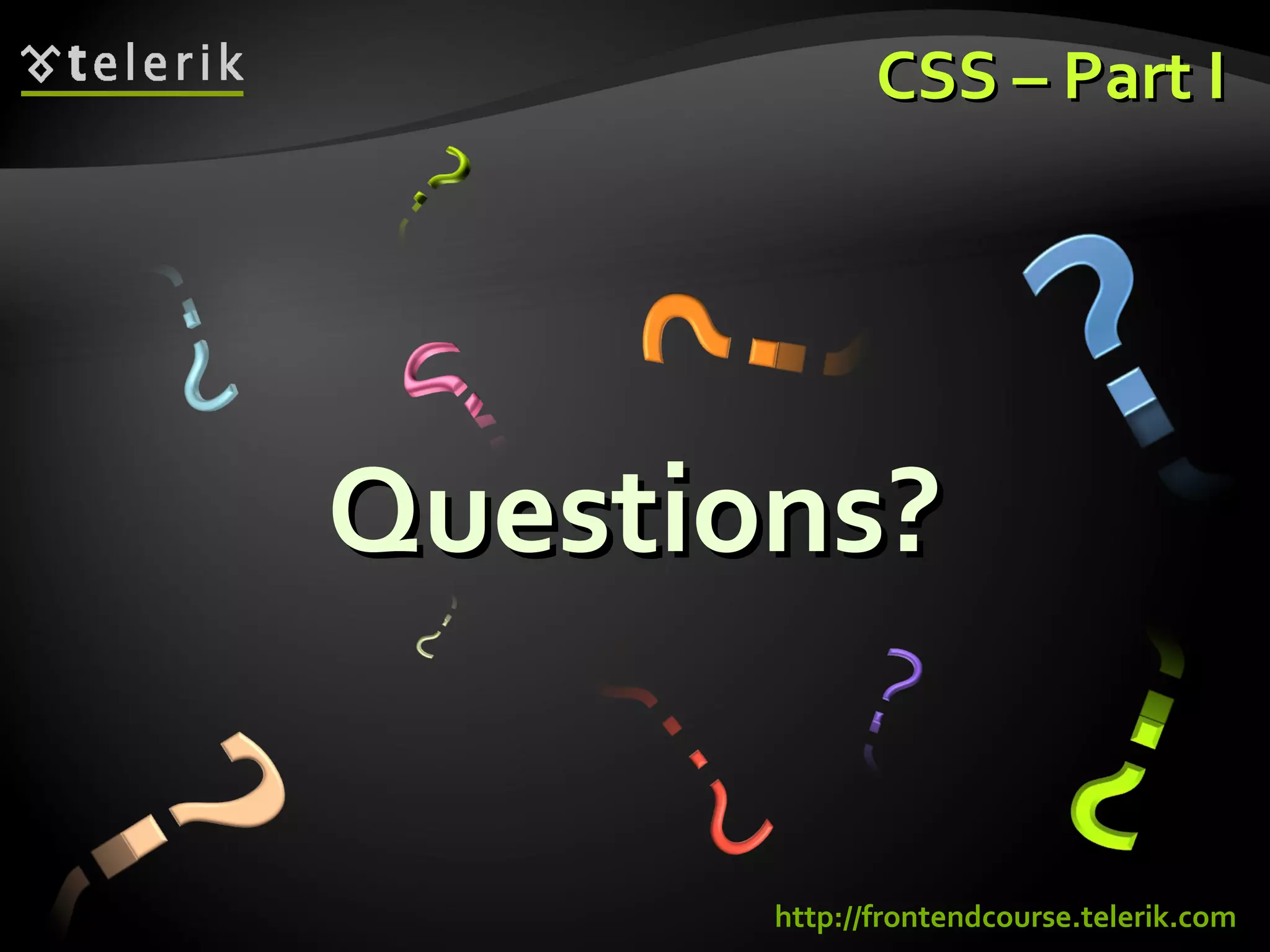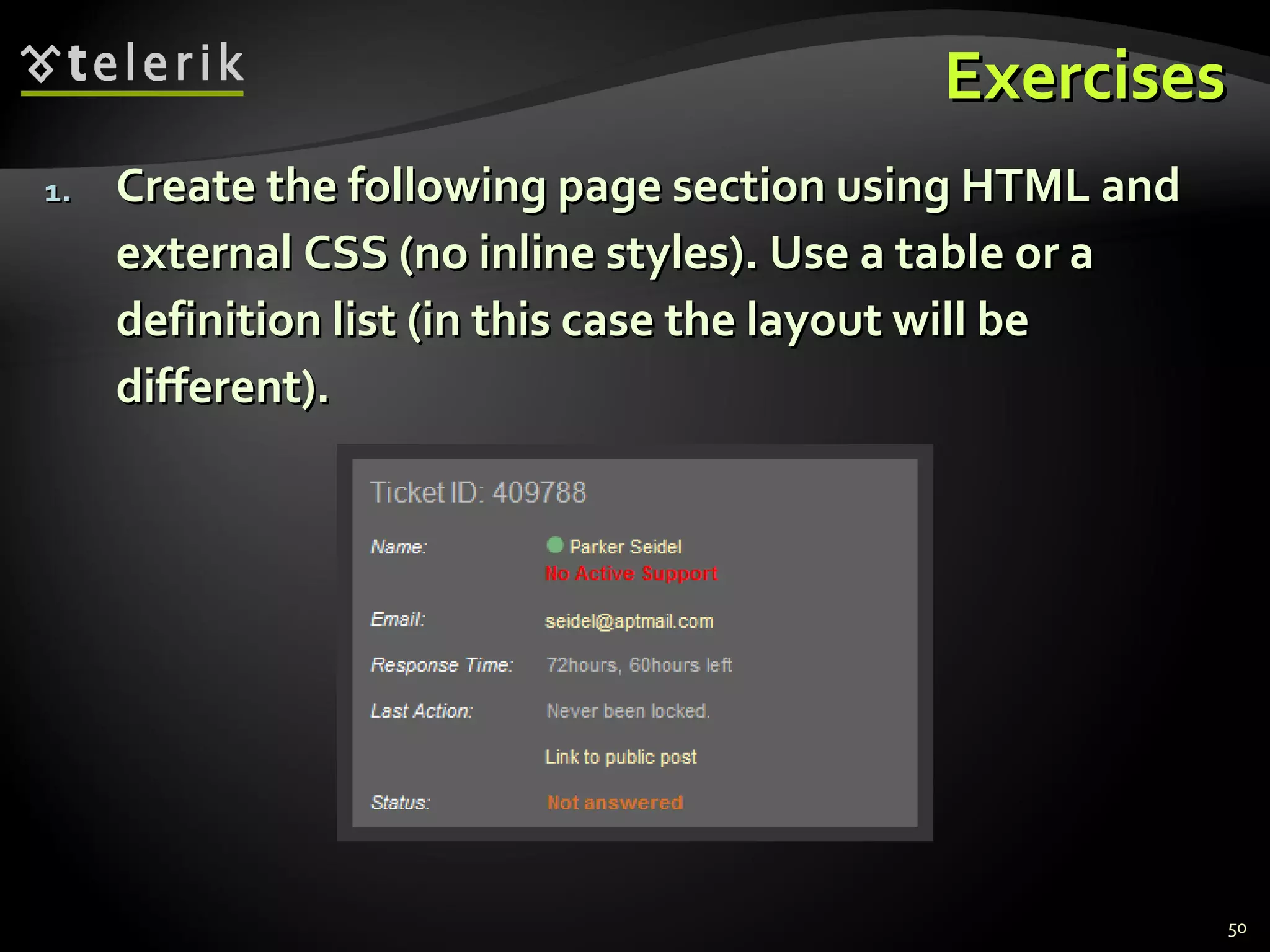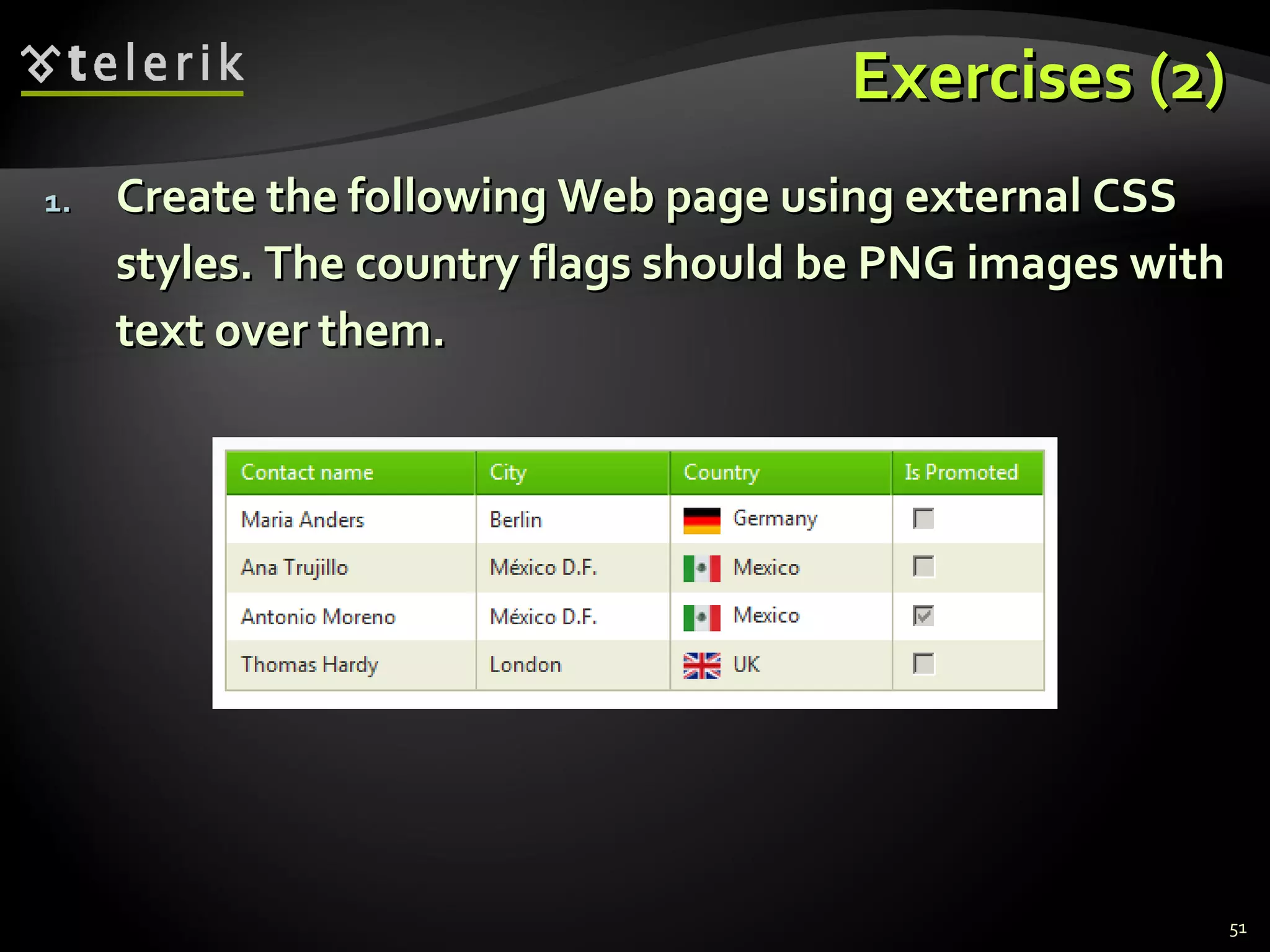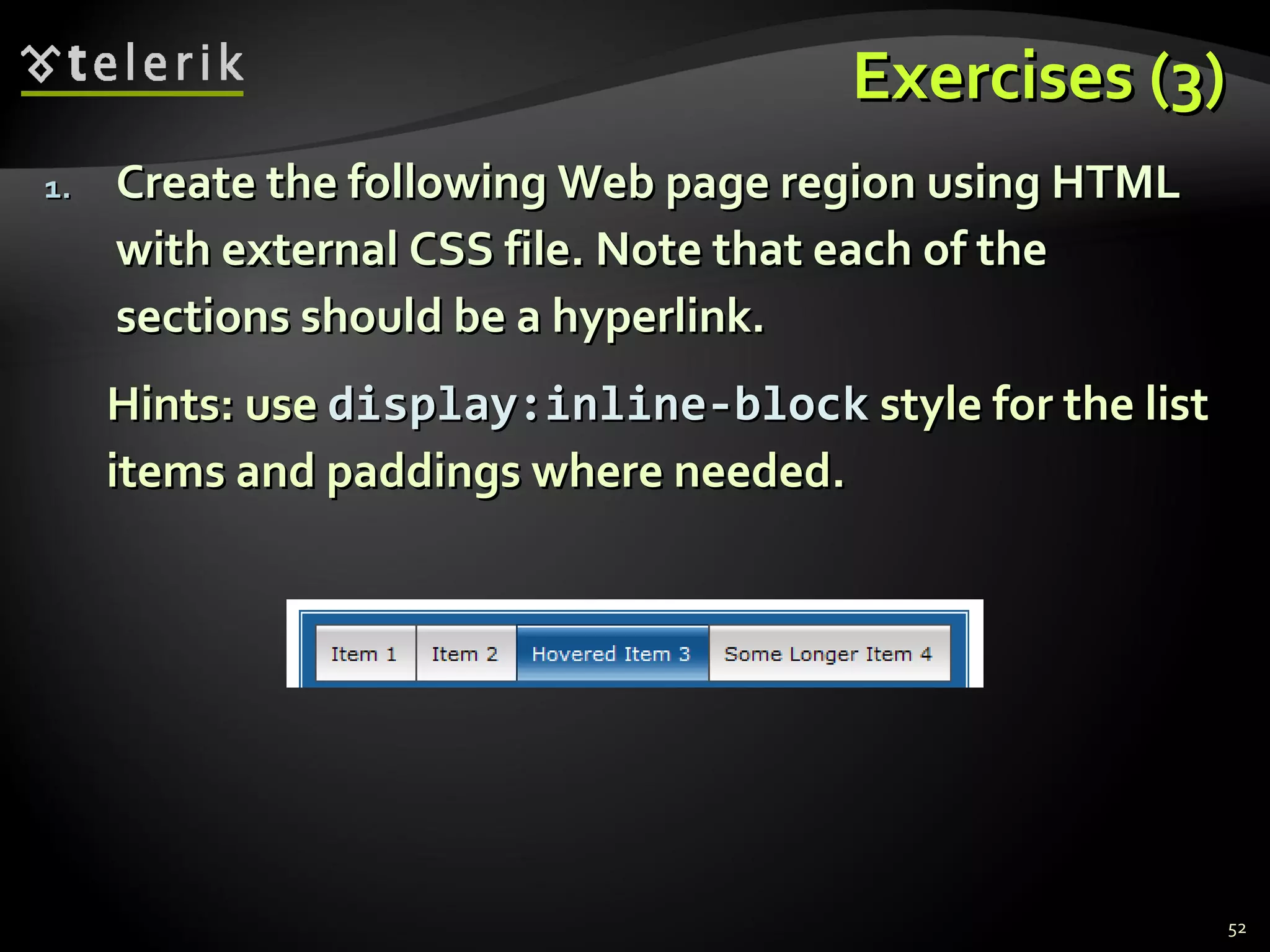This document provides an introduction to Cascading Style Sheets (CSS), including what CSS is, how it separates content from presentation, and how to link CSS to HTML documents. It describes CSS syntax, selectors, properties and values. It also covers CSS precedence and inheritance, and different methods for including CSS like embedded, inline and external stylesheets.
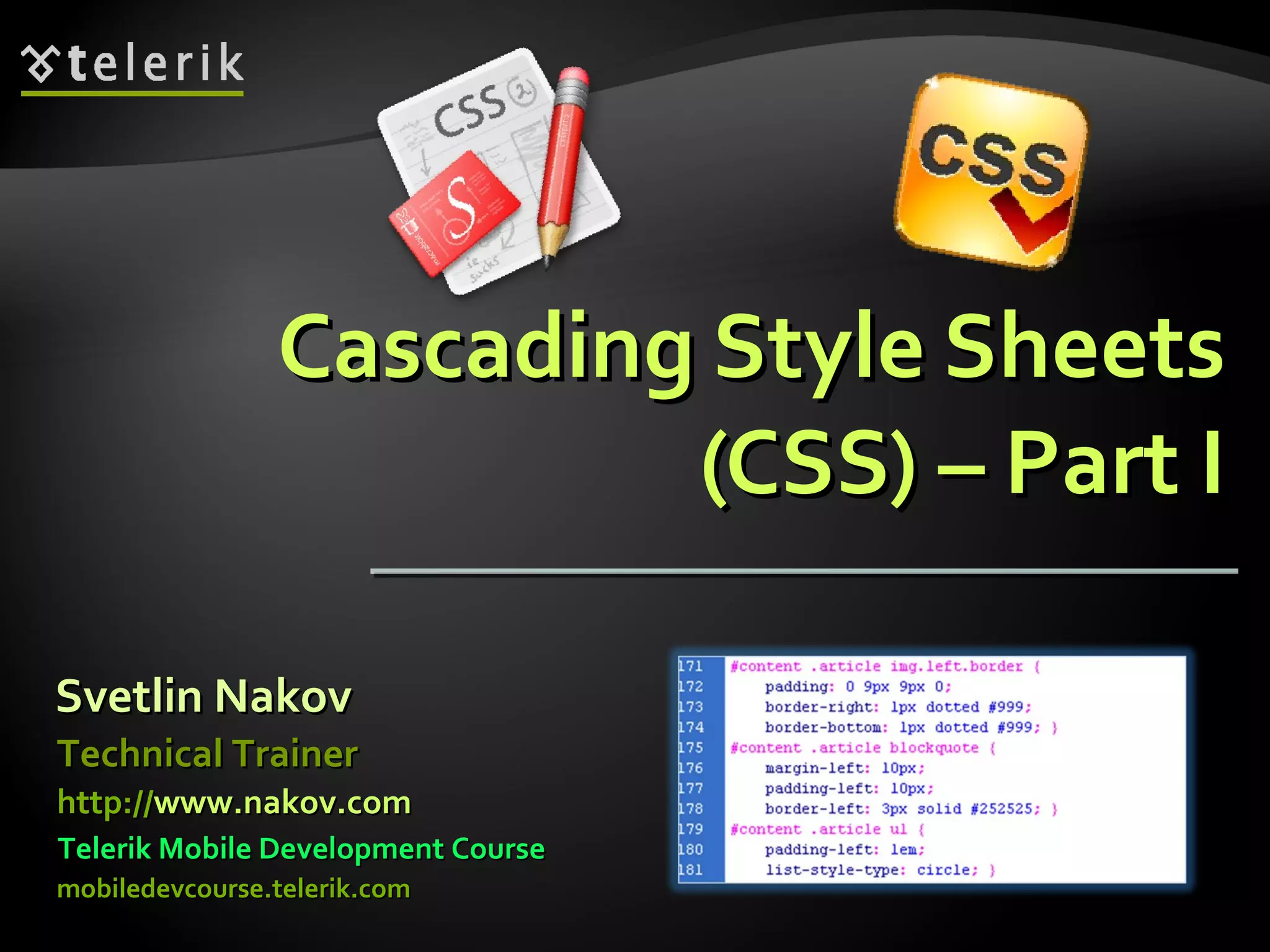
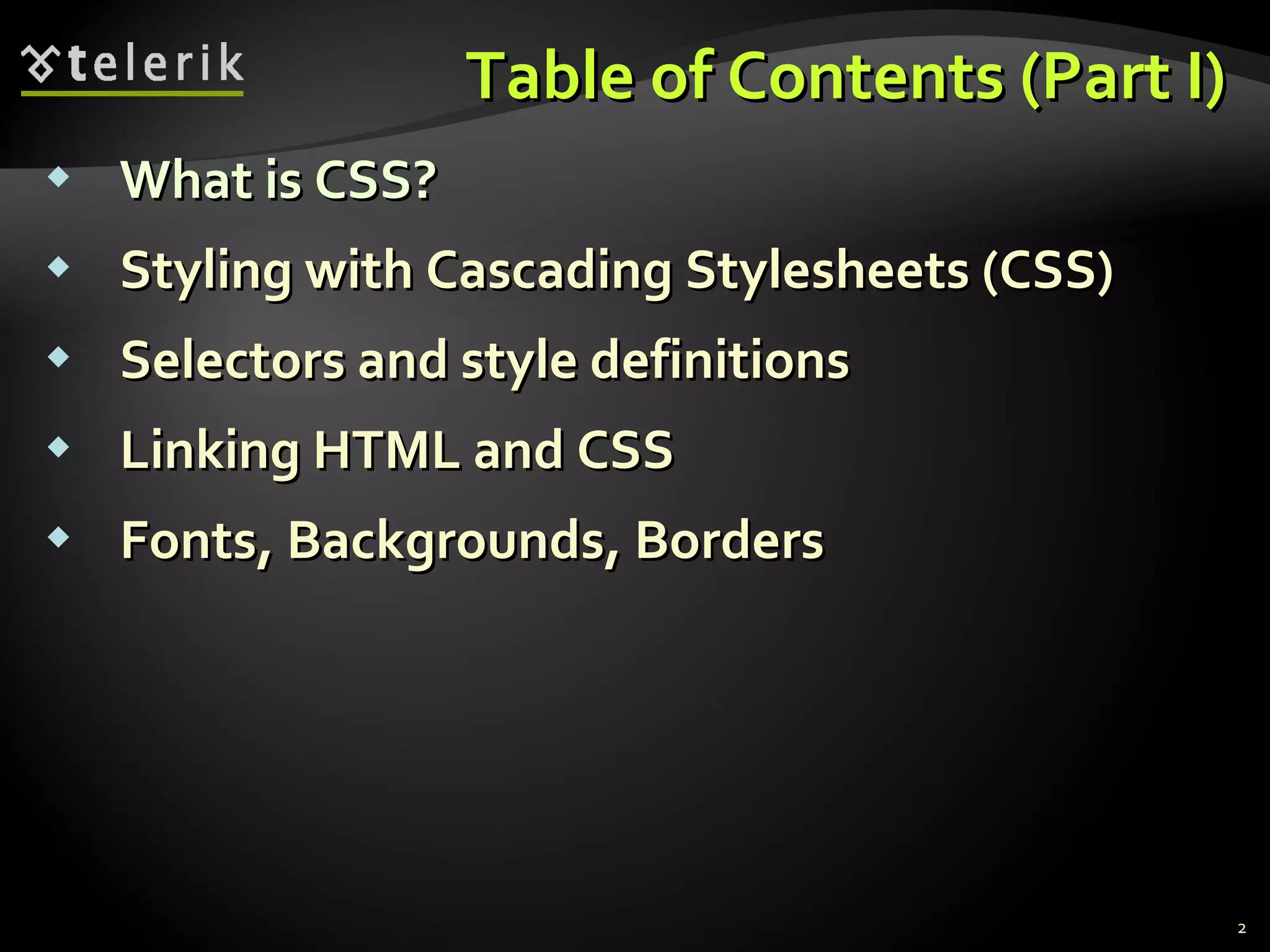
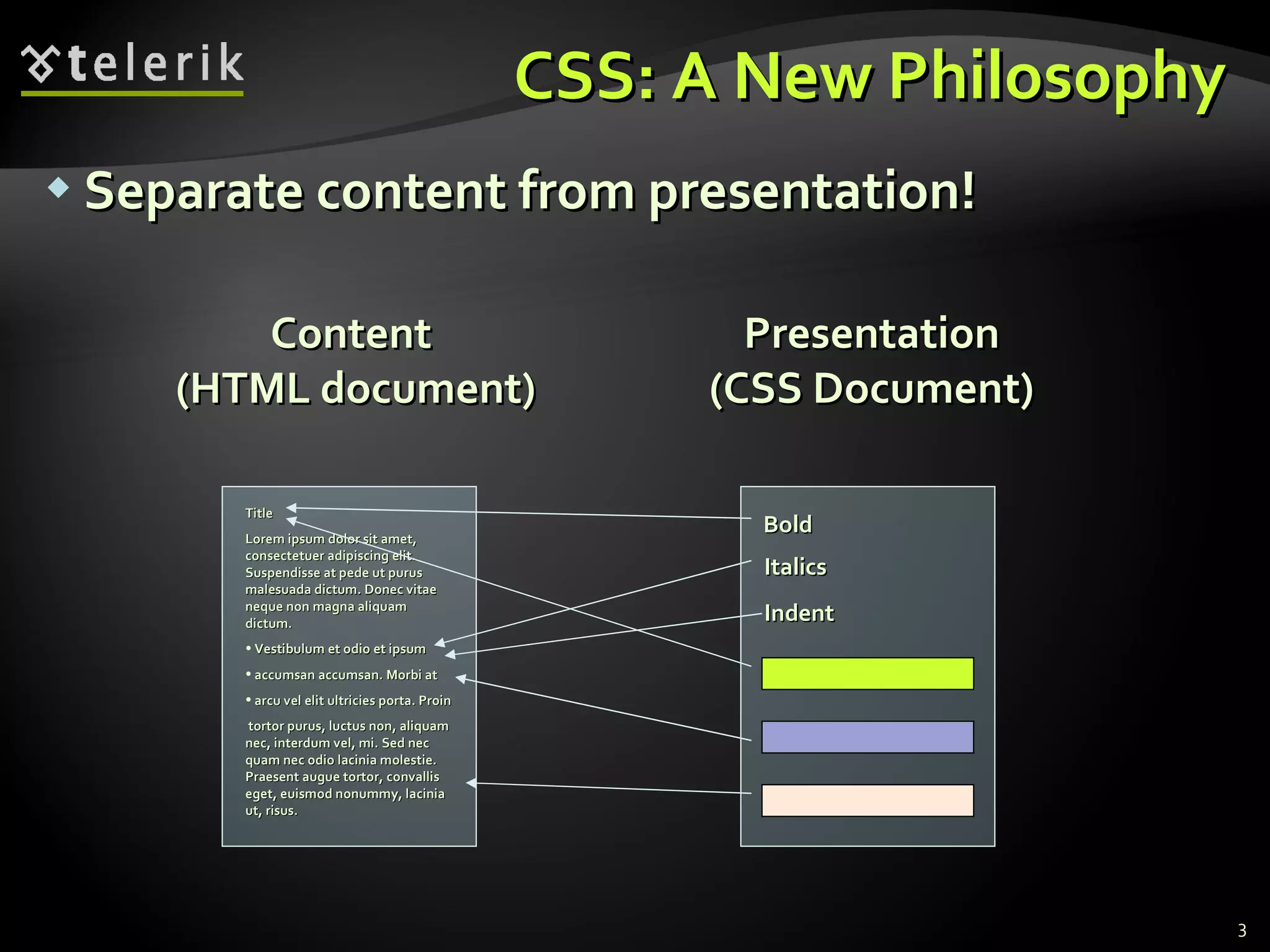
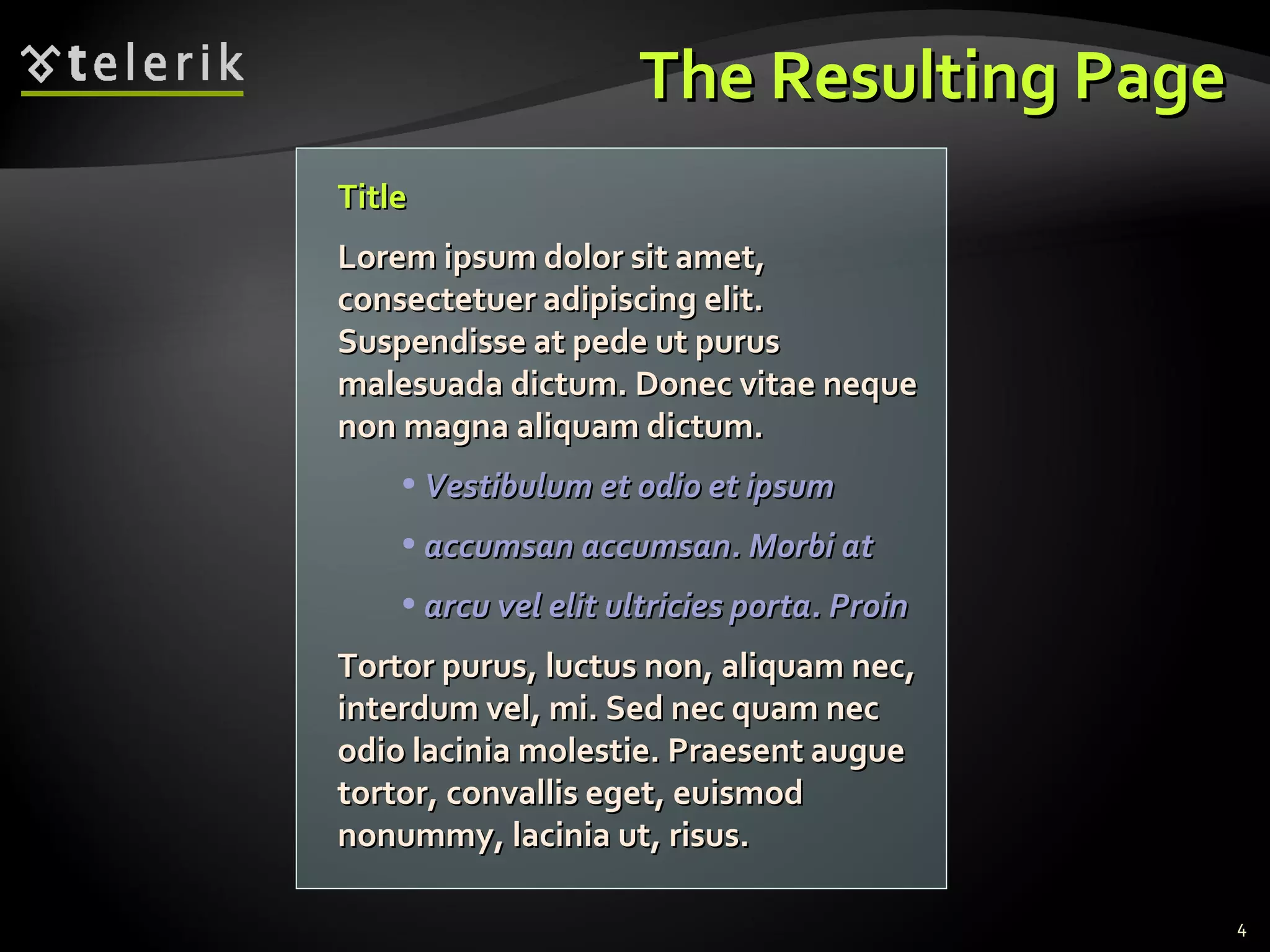
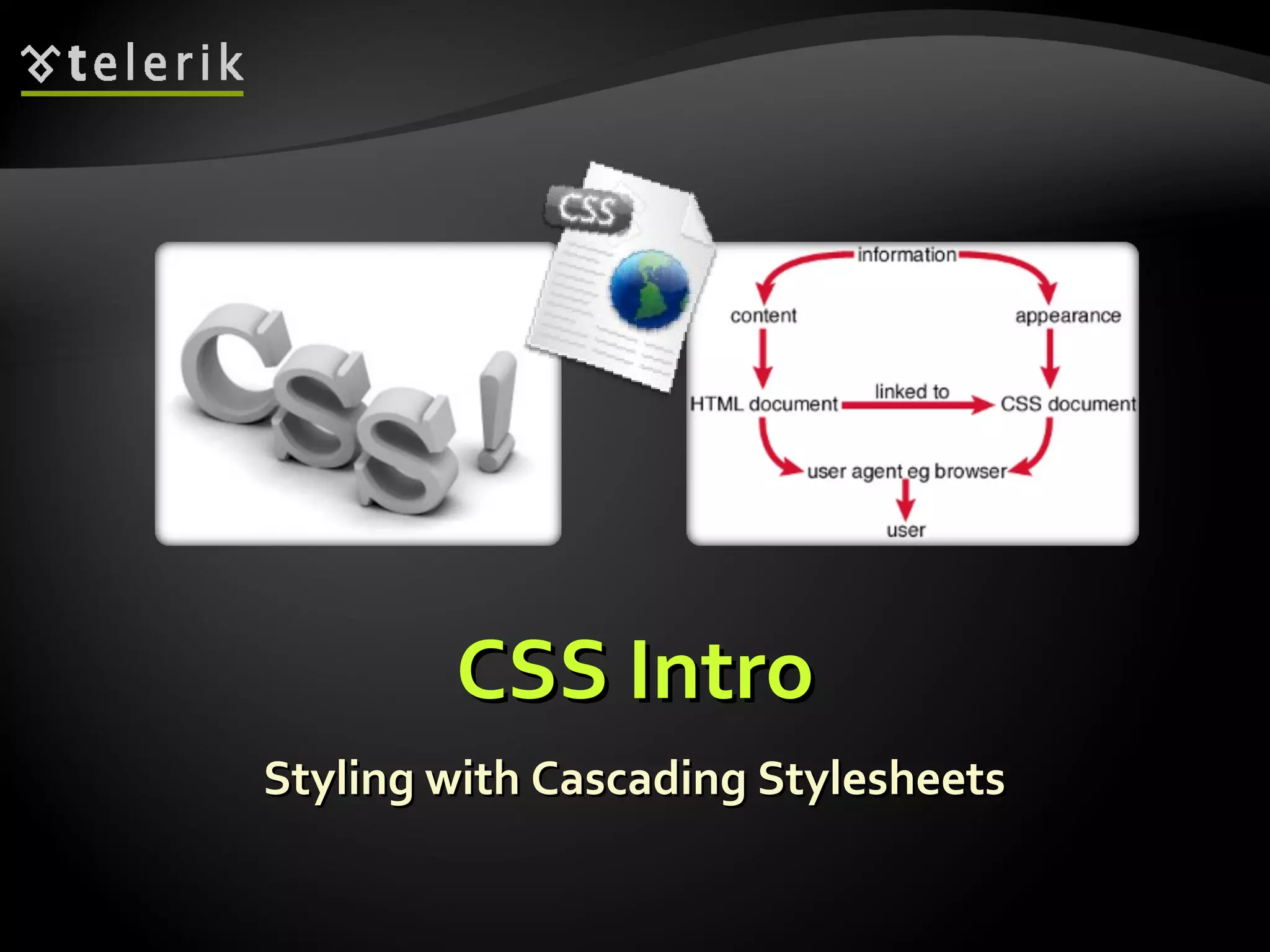
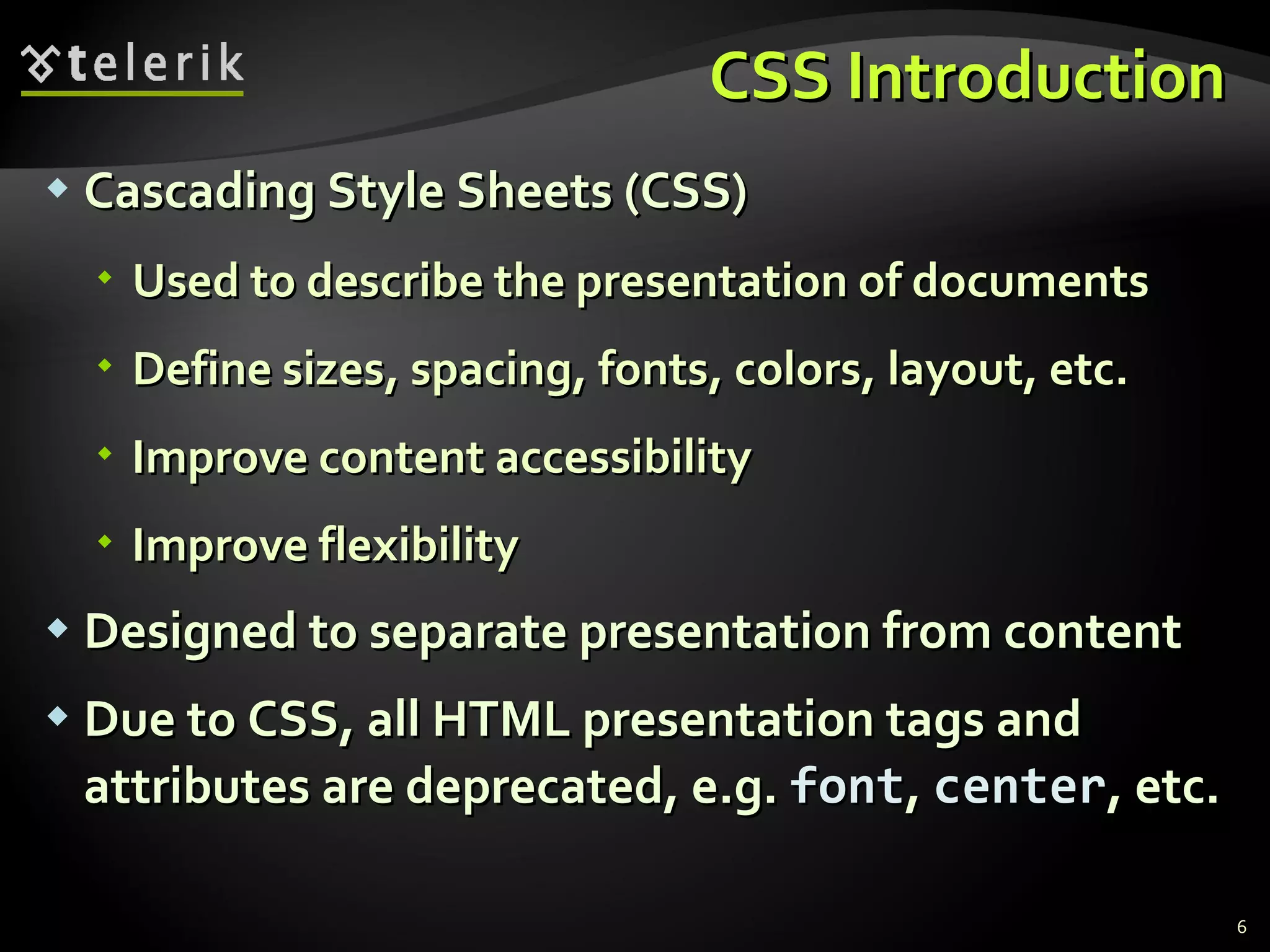
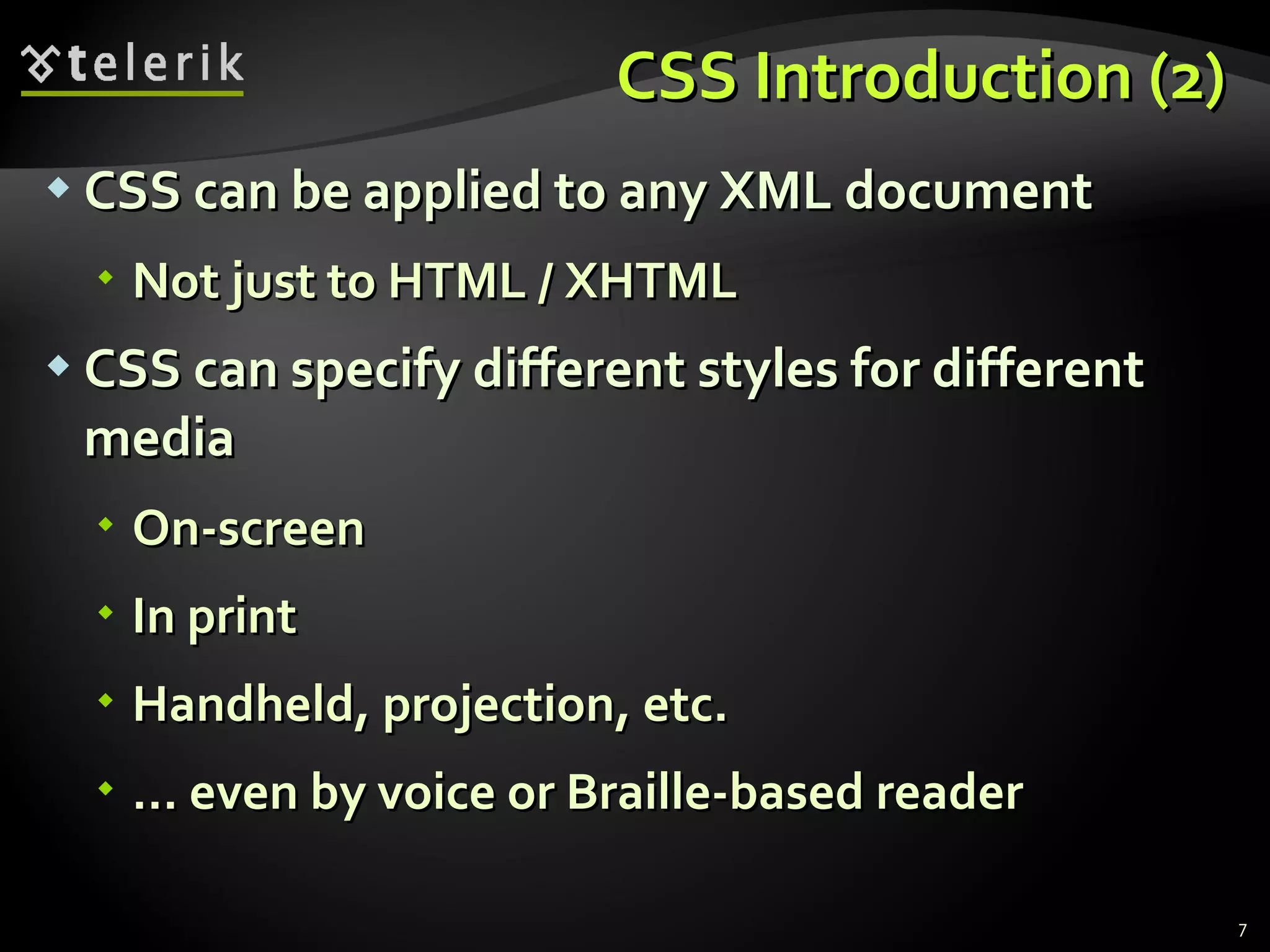
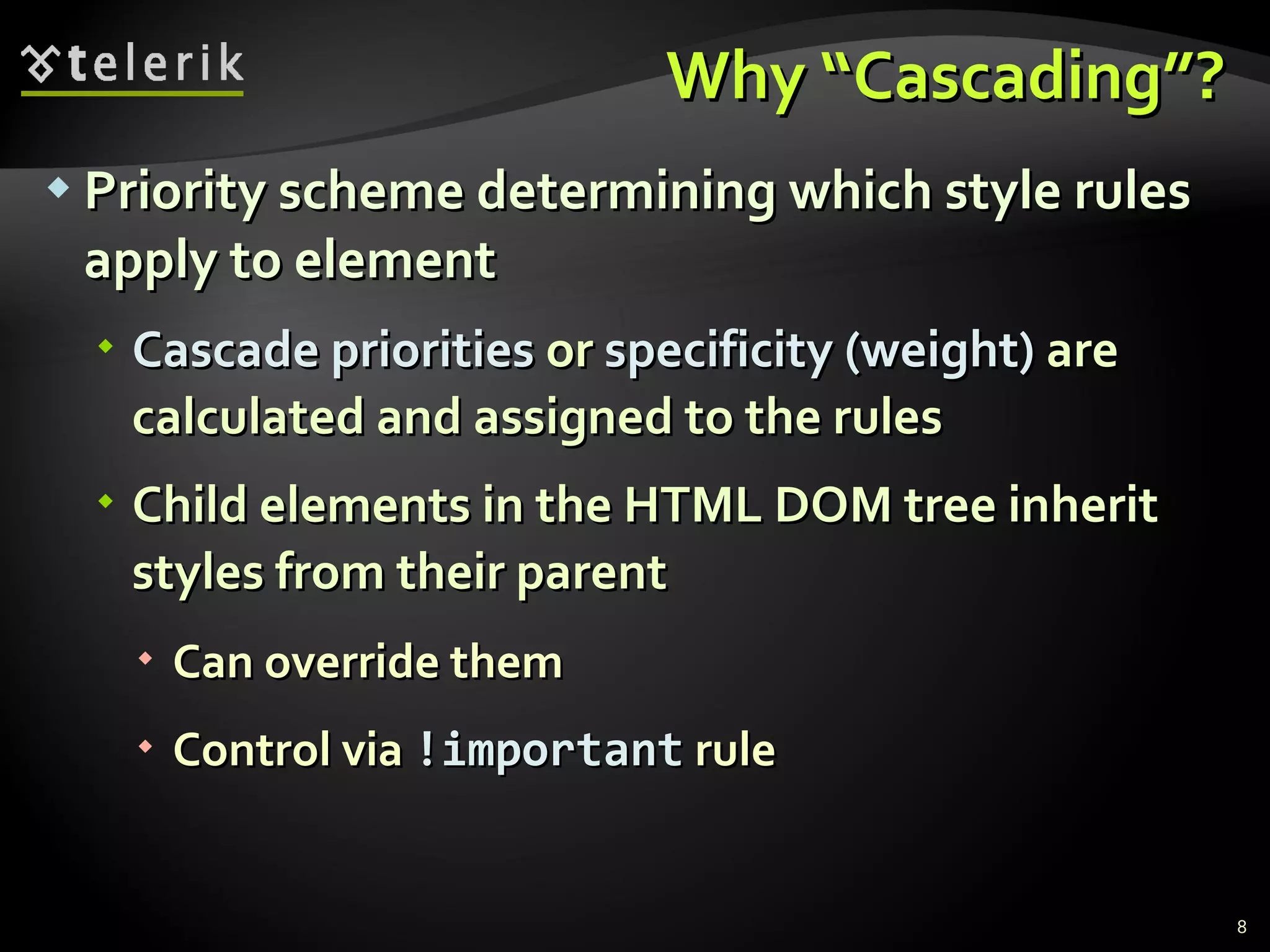
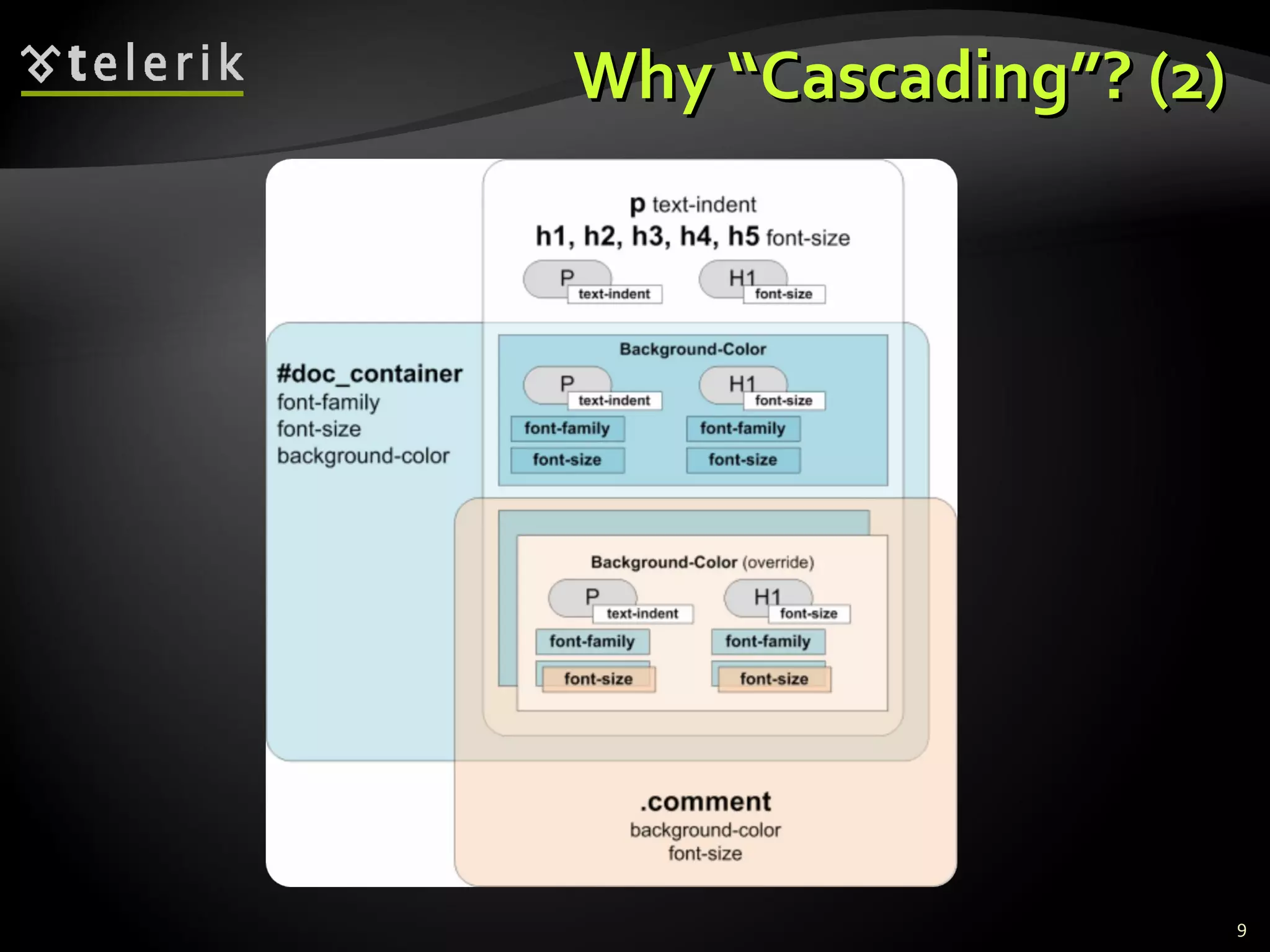
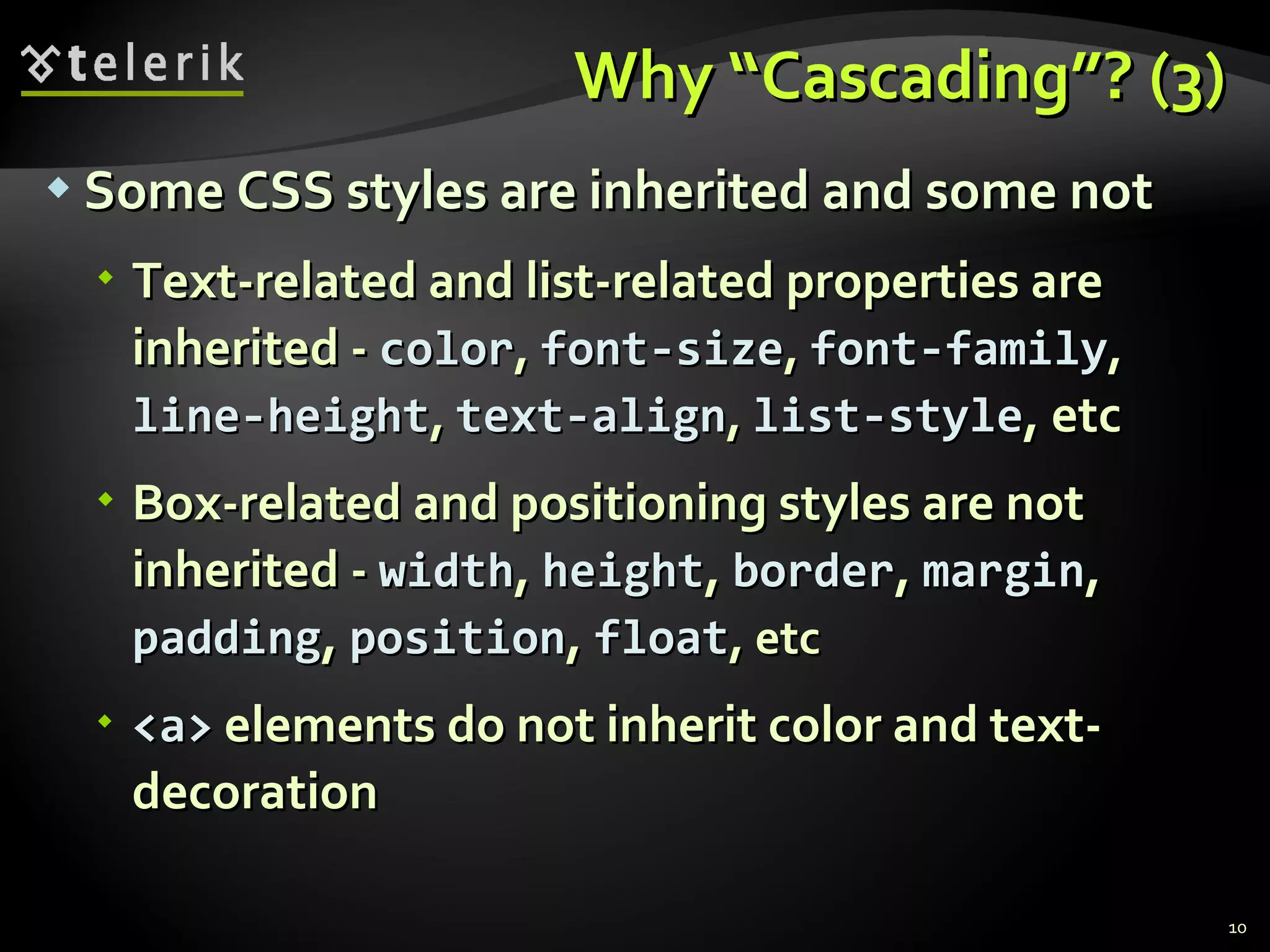
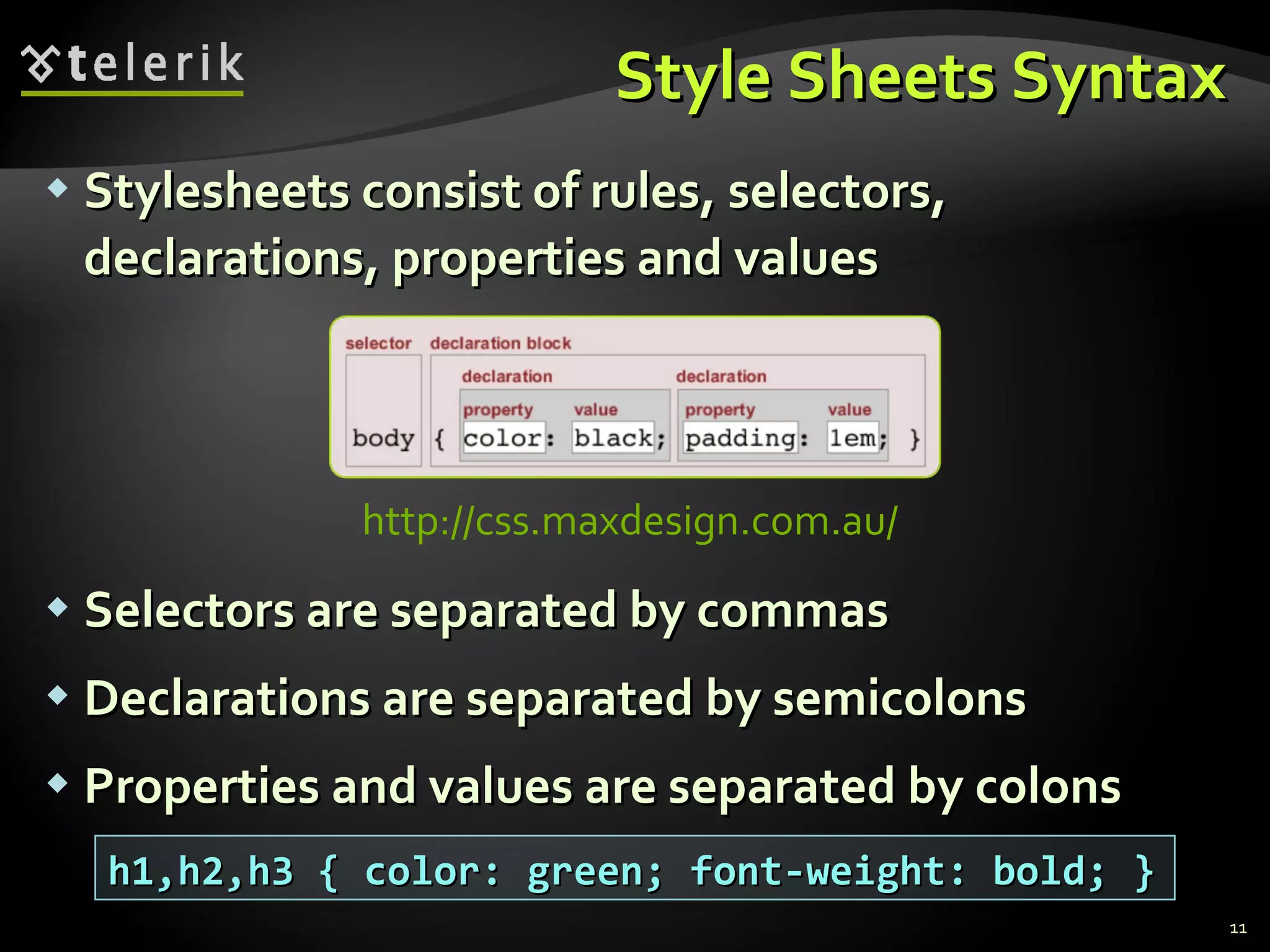
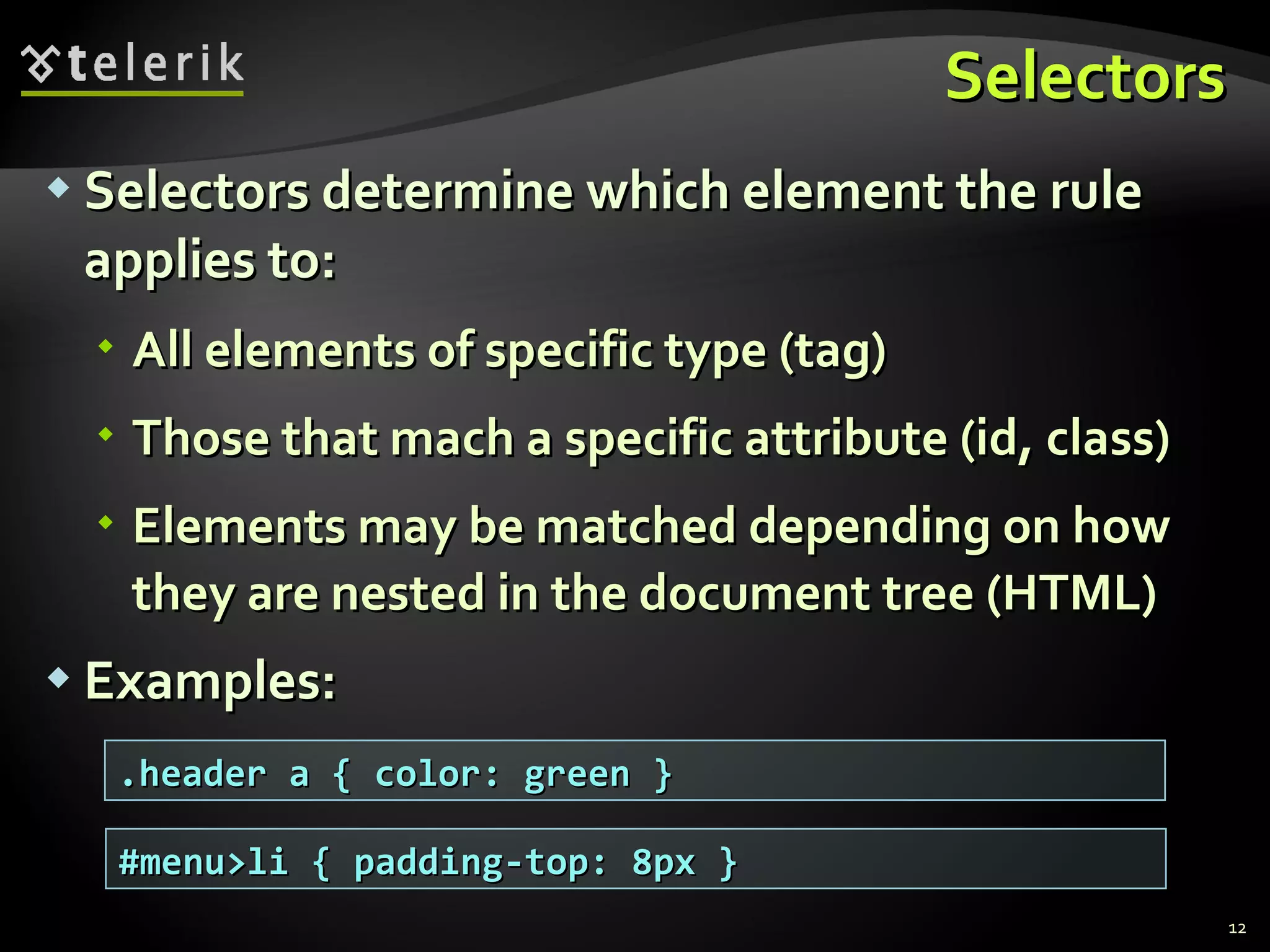
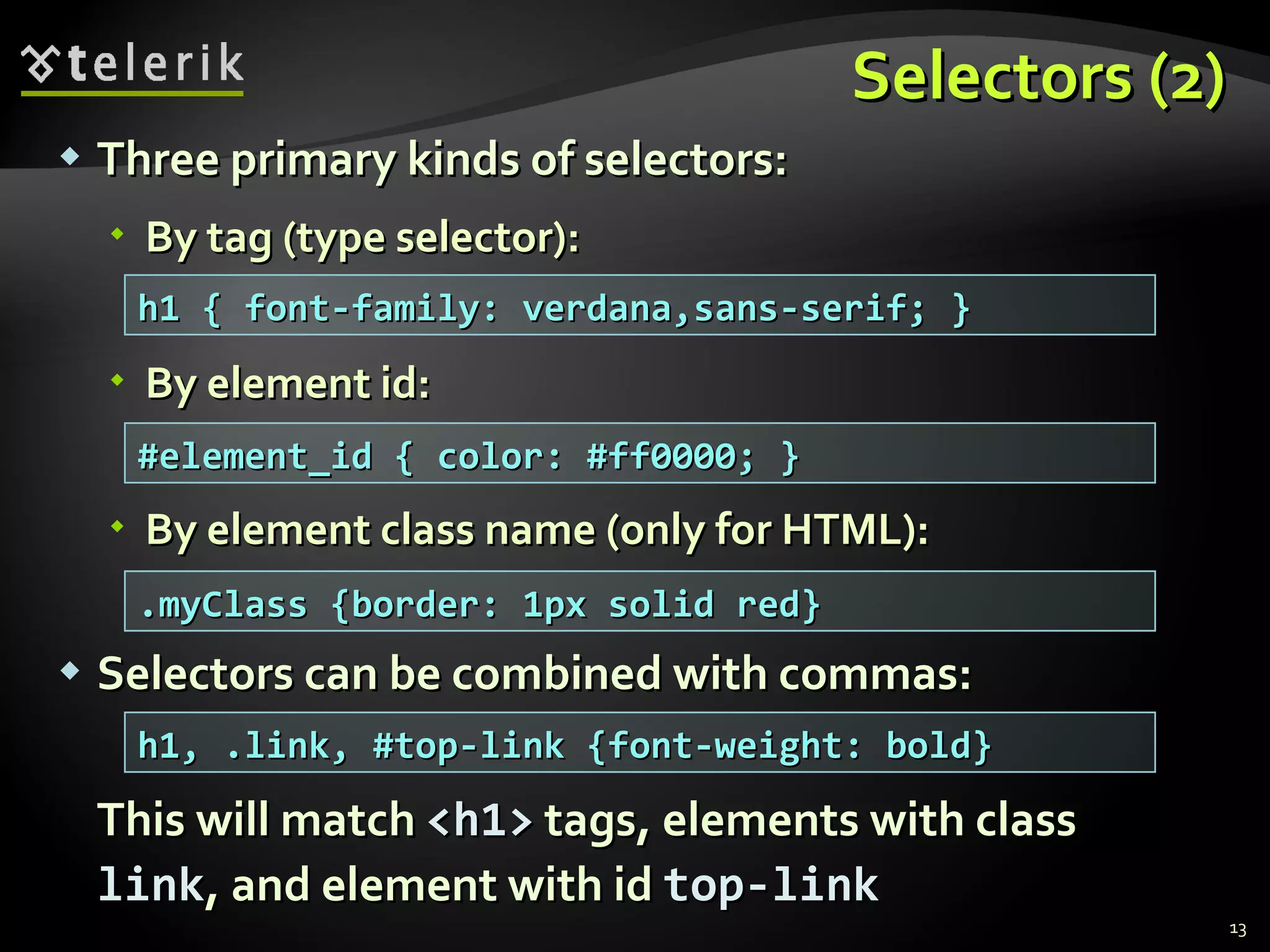
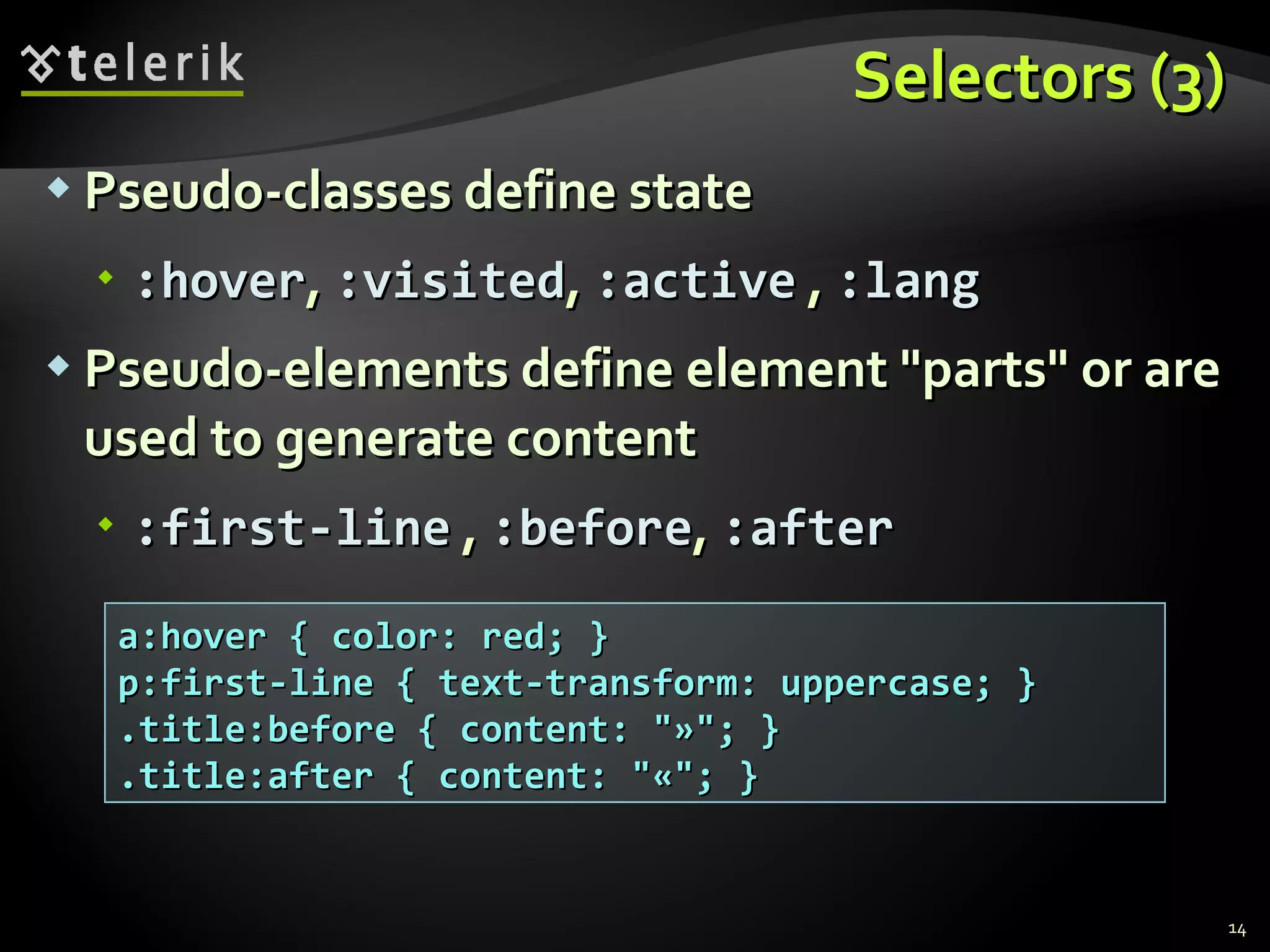
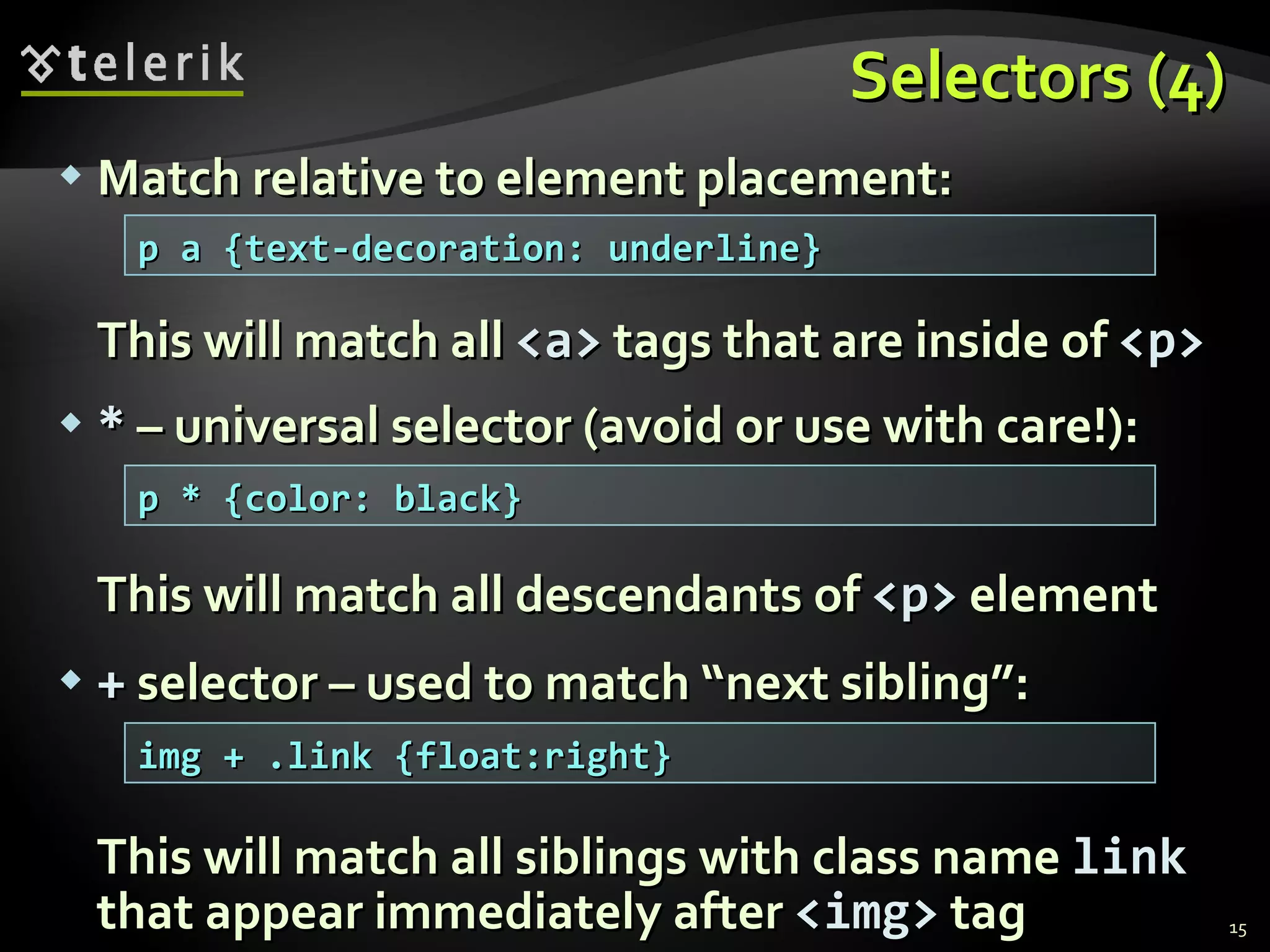
![Selectors (5) > selector – matches direct child nodes: This will match all elements with class error , direct children of <p> tag [ ] – matches tag attributes by regular expression: This will match all <img> tags with alt attribute containing the word logo .class1.class2 (no space) - matches elements with both (all) classes applied at the same time p > .error {font-size: 8px} img[alt~=logo] {border: none}](https://image.slidesharecdn.com/5-css-part-i-120206055657-phpapp02/75/CSS-Part-I-16-2048.jpg)
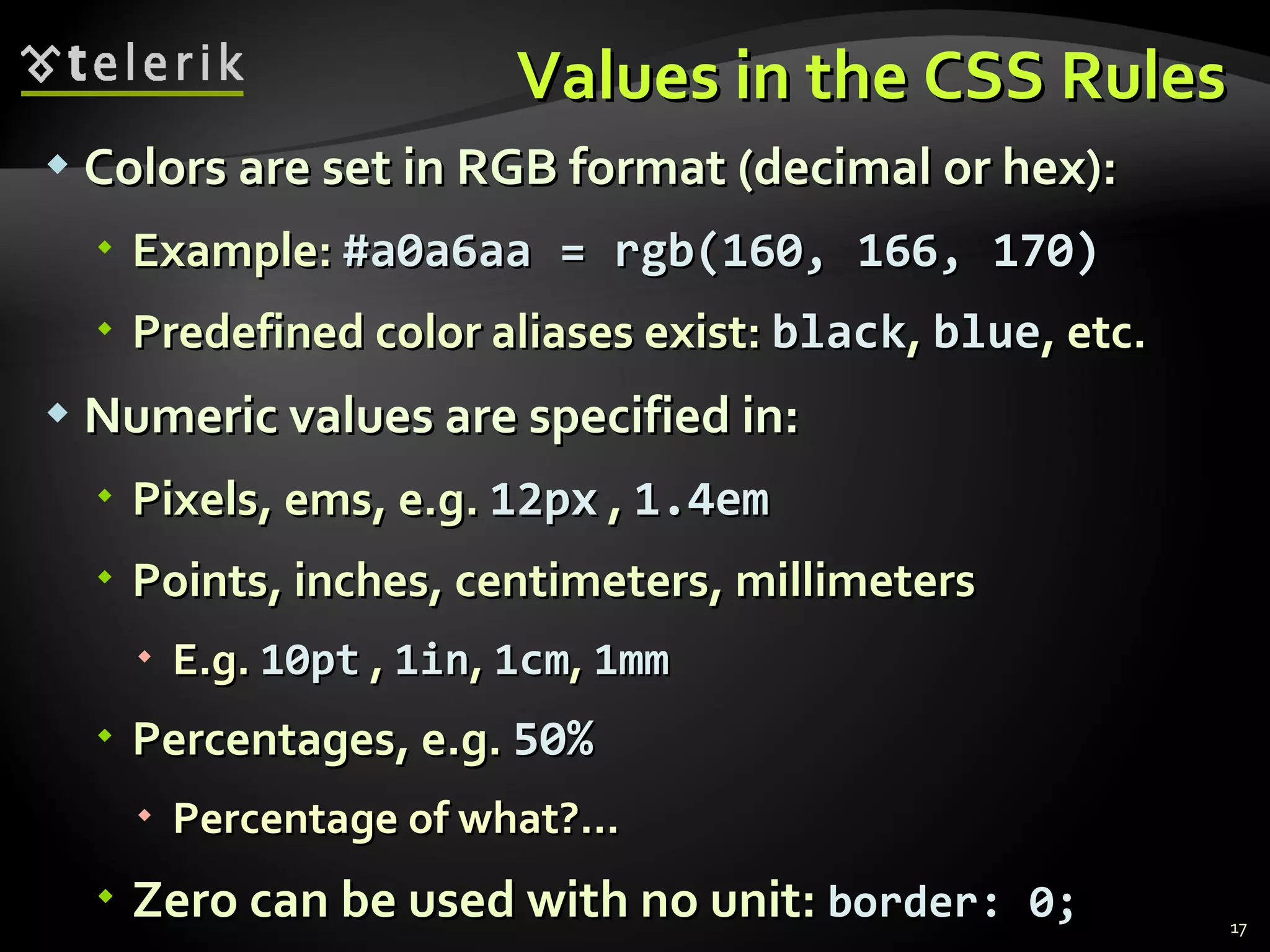
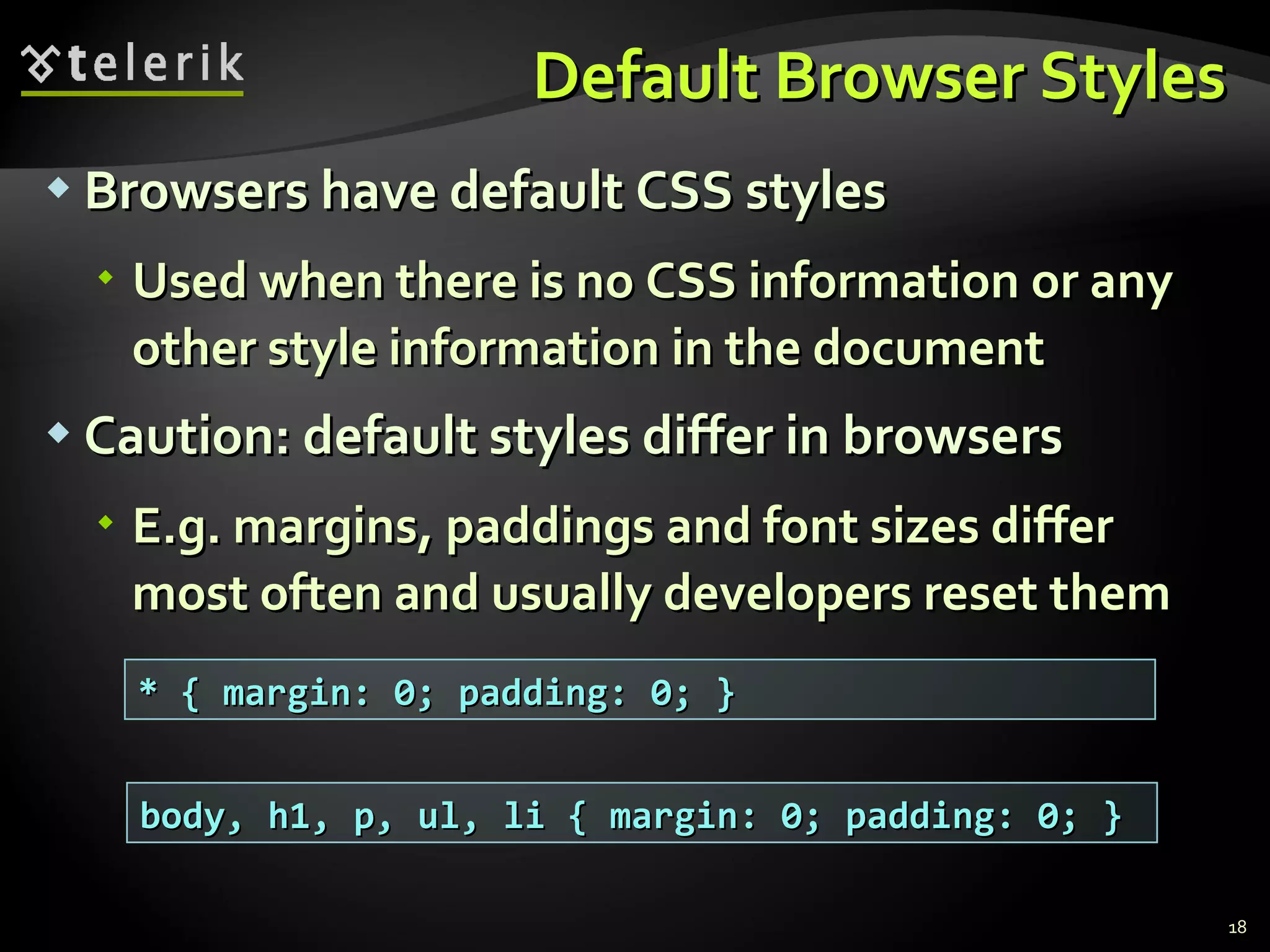
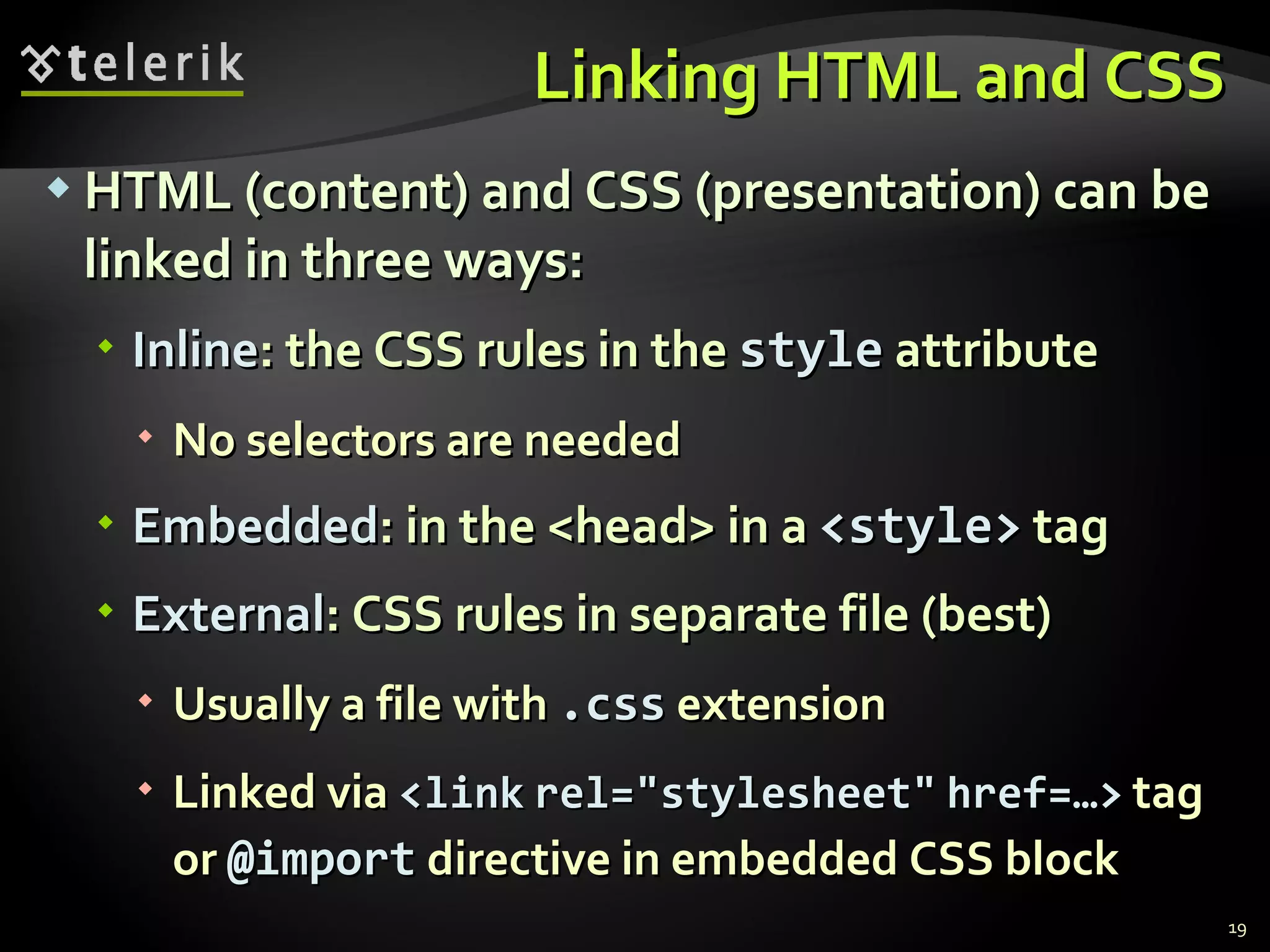
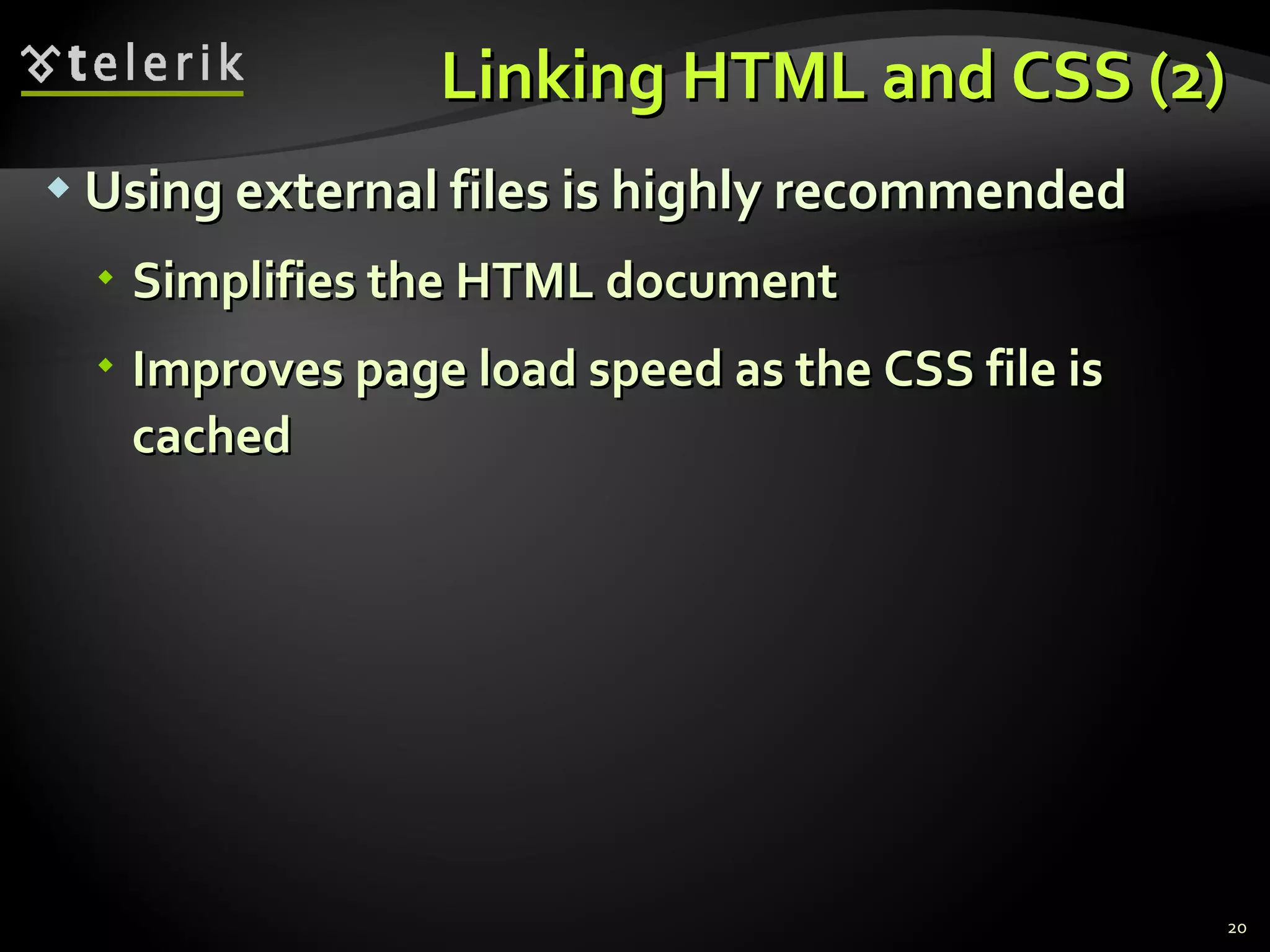
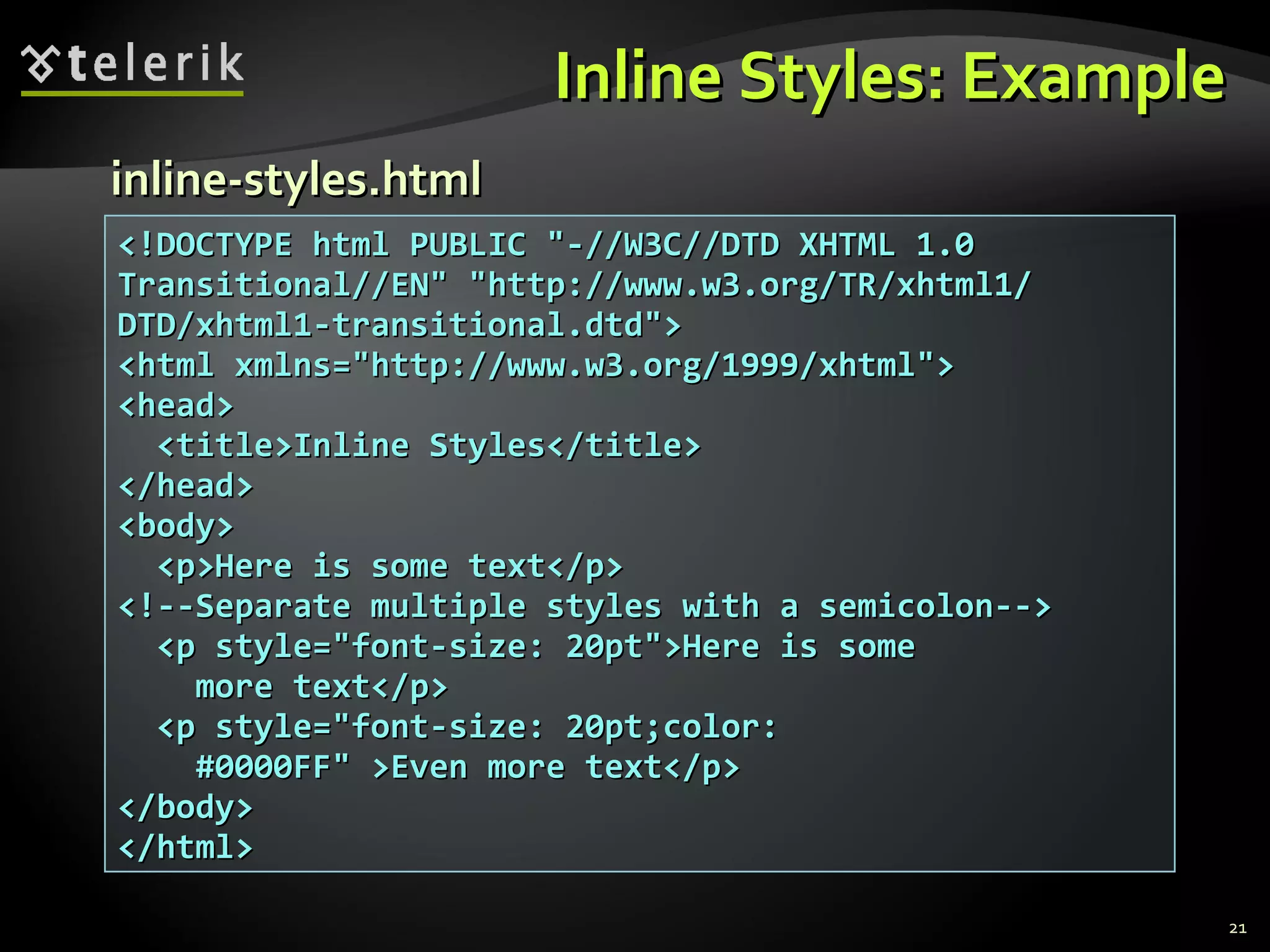
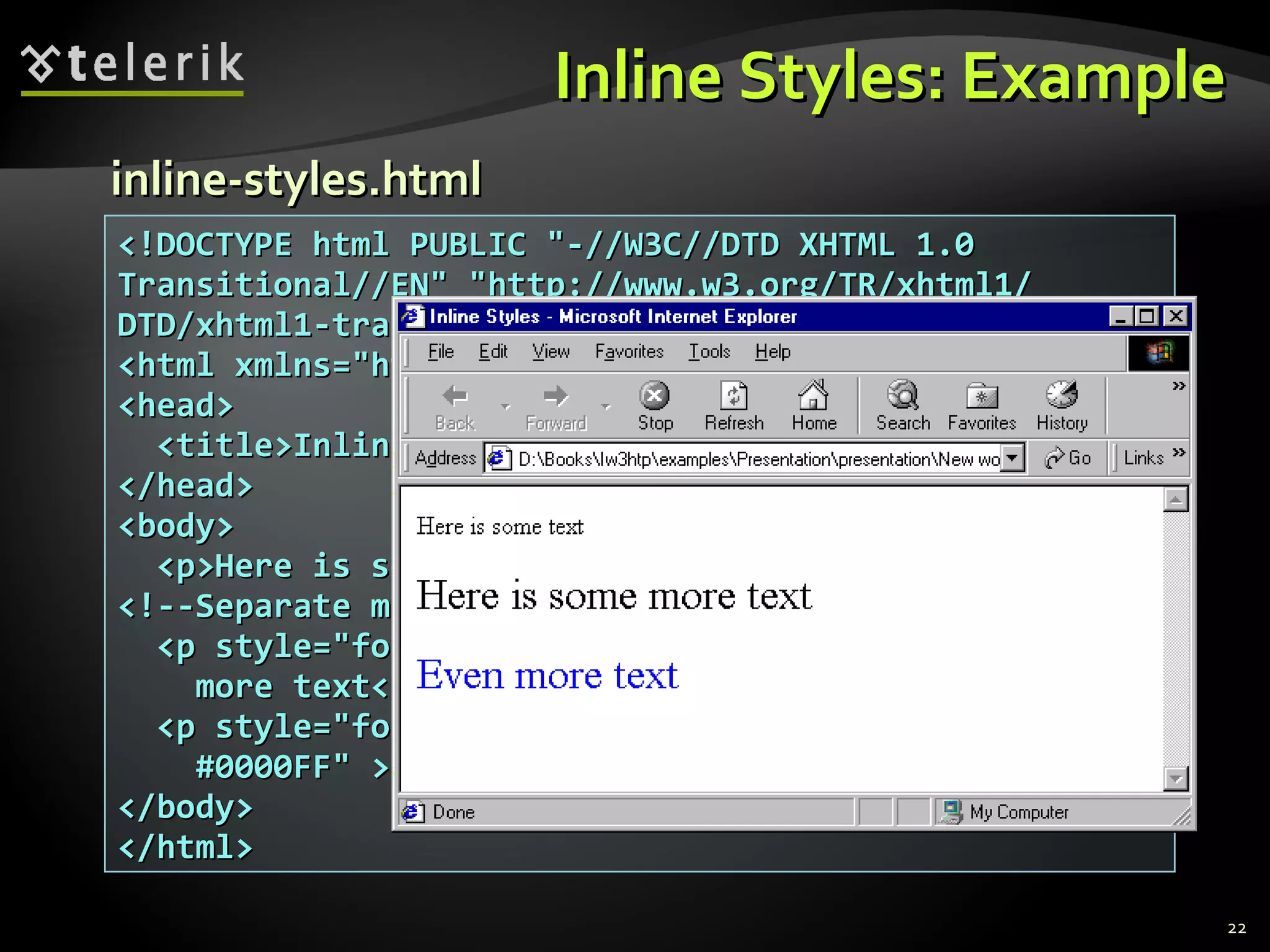
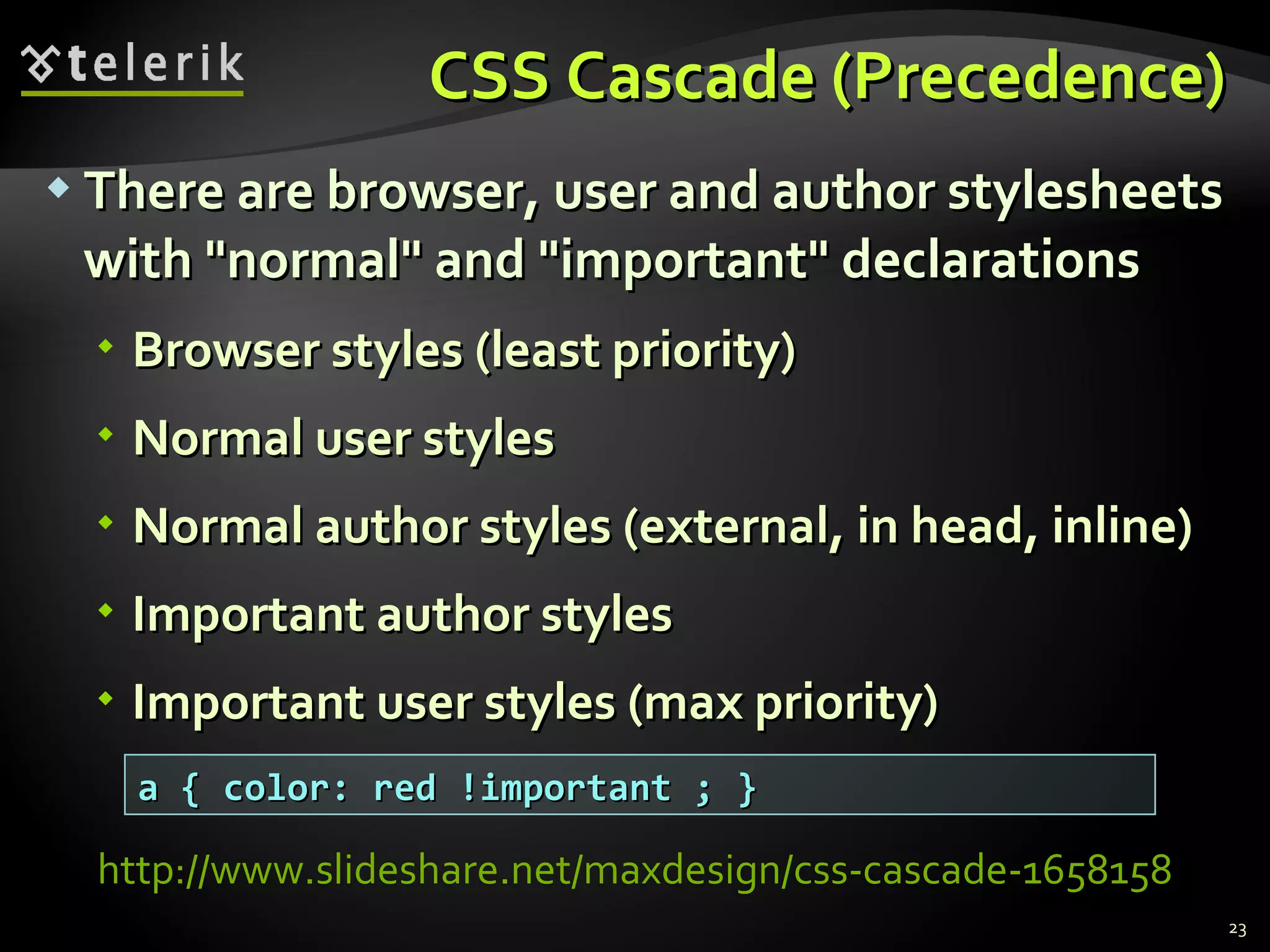
![CSS Specificity CSS specificity is used to determine the precedence of CSS style declarations with the same origin. Selectors are what matters Simple calculation: #id = 100, .class = 10, :pseudo = 10, [attr] = 10, tag = 1, * = 0 Same number of points? Order matters. See also: http://www.smashingmagazine.com/2007/07/27/css-specificity-things-you-should-know/ http://css.maxdesign.com.au/selectutorial/advanced_conflict.htm](https://image.slidesharecdn.com/5-css-part-i-120206055657-phpapp02/75/CSS-Part-I-24-2048.jpg)
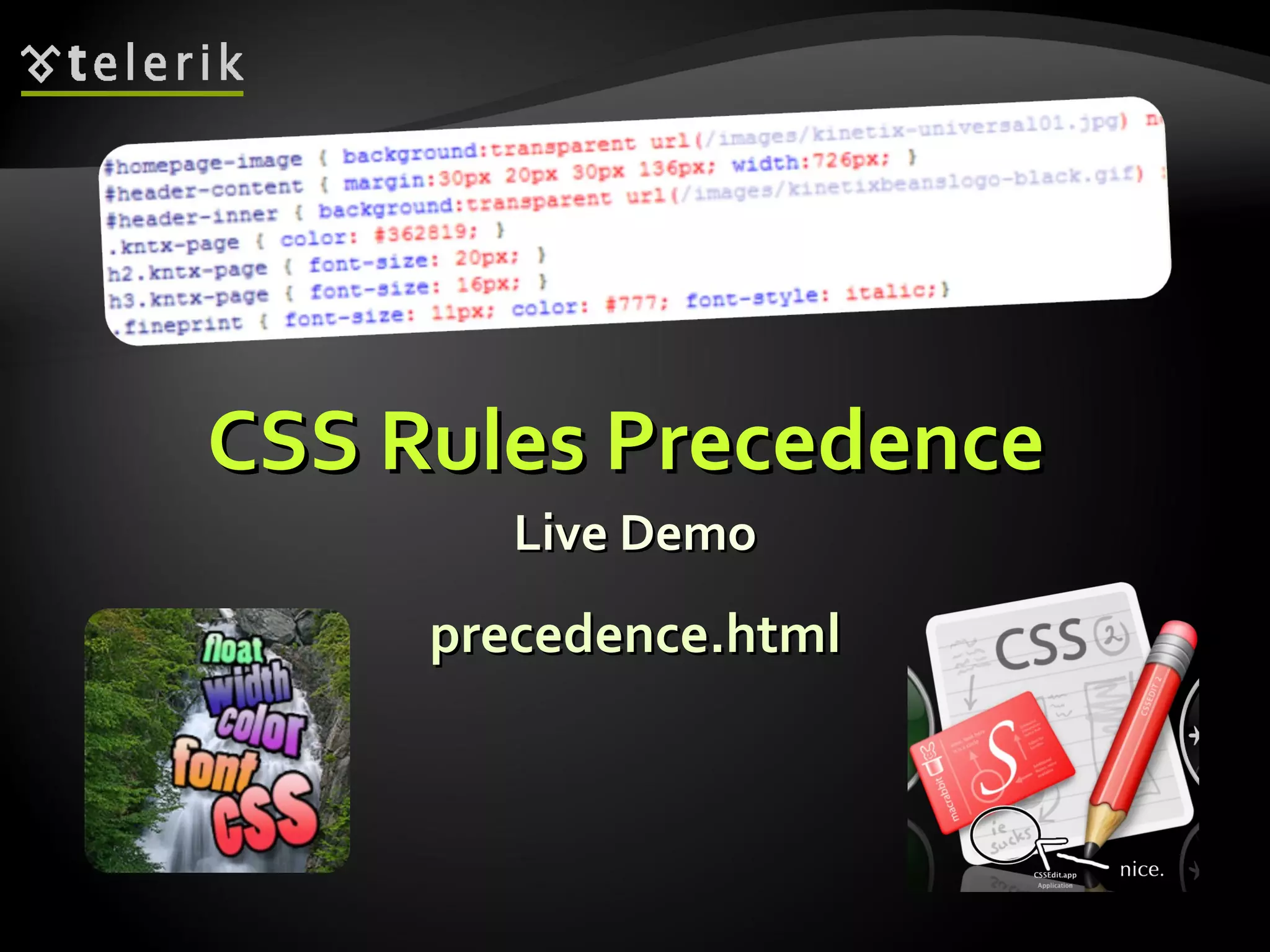
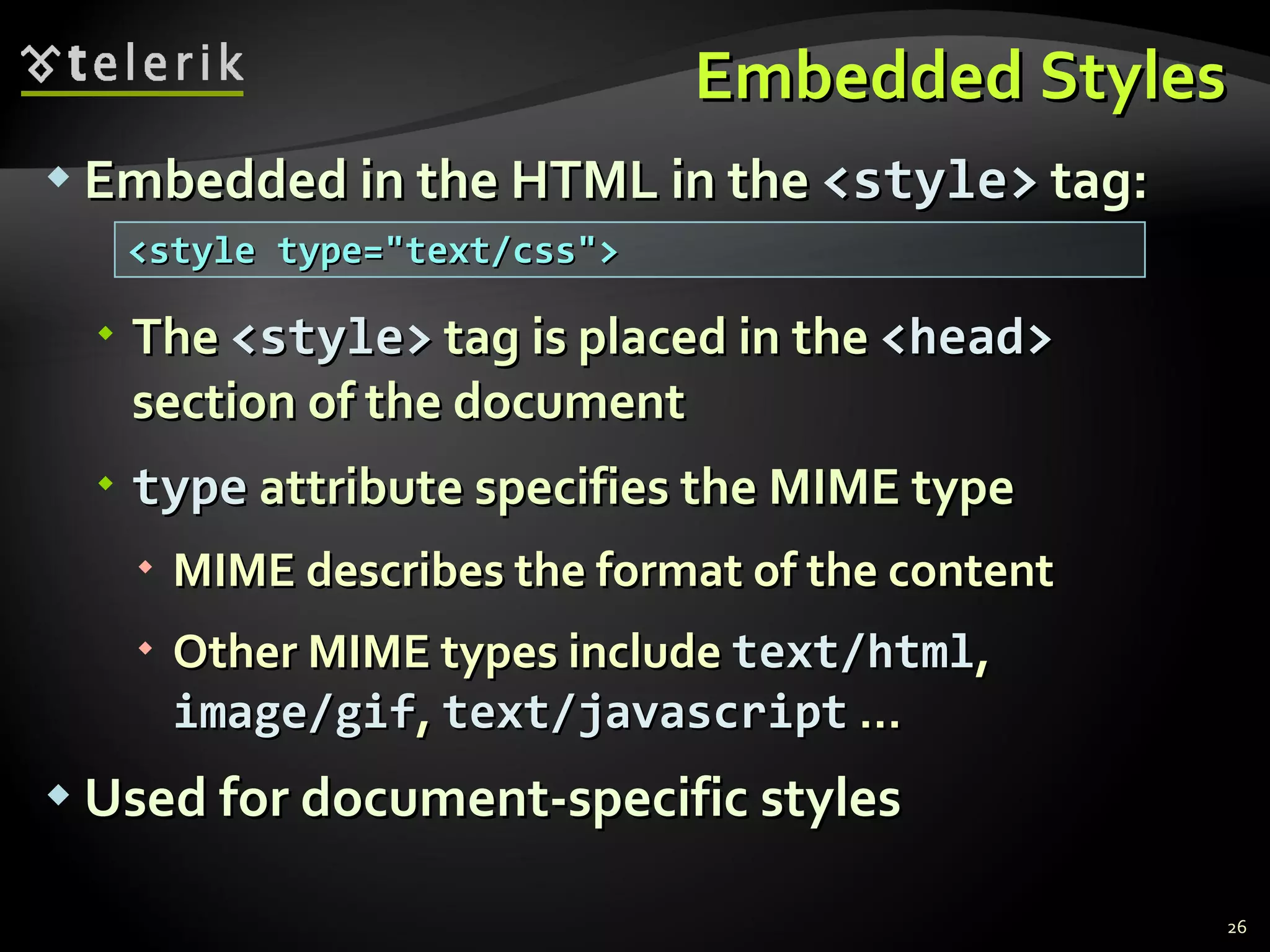
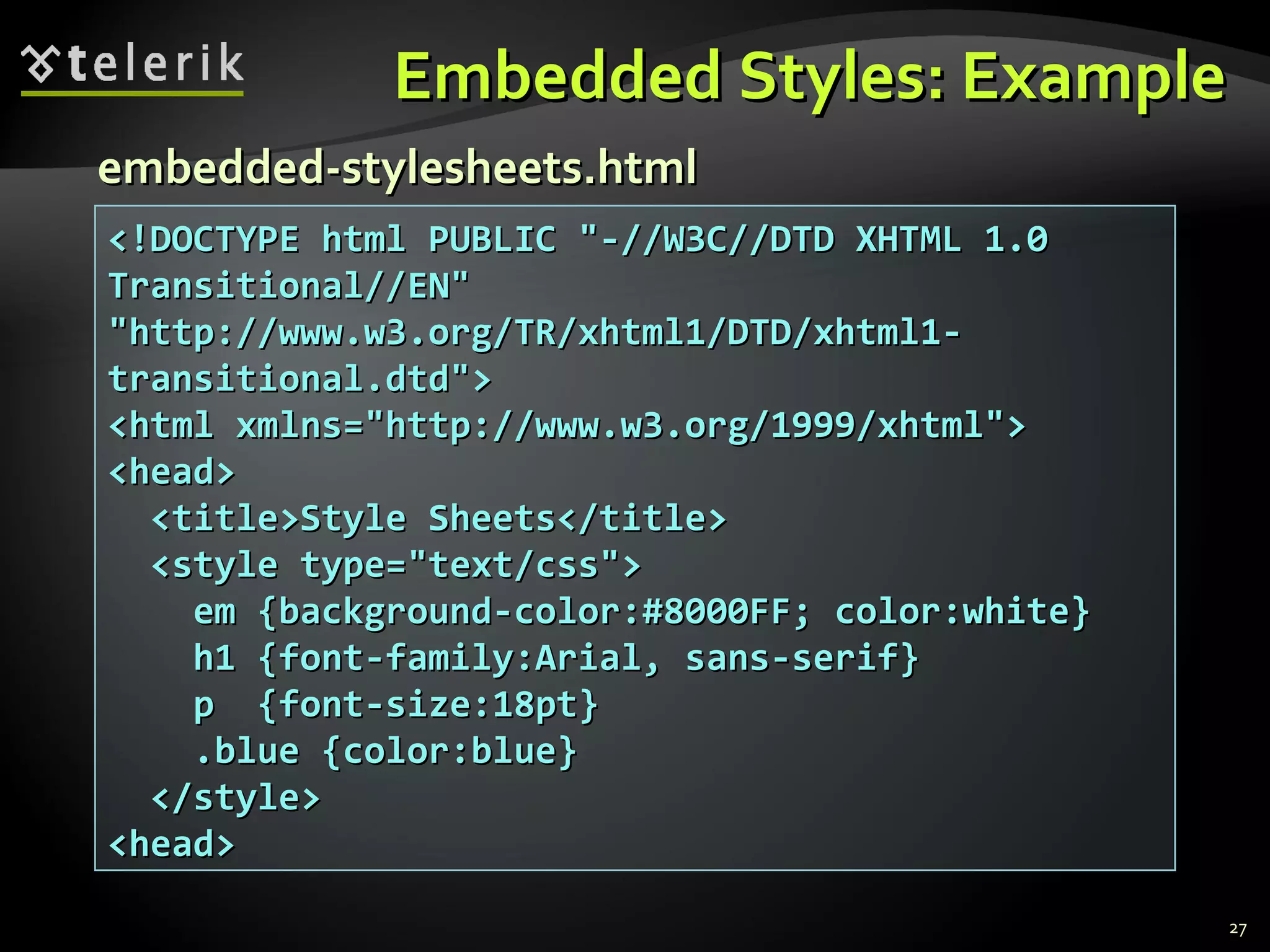
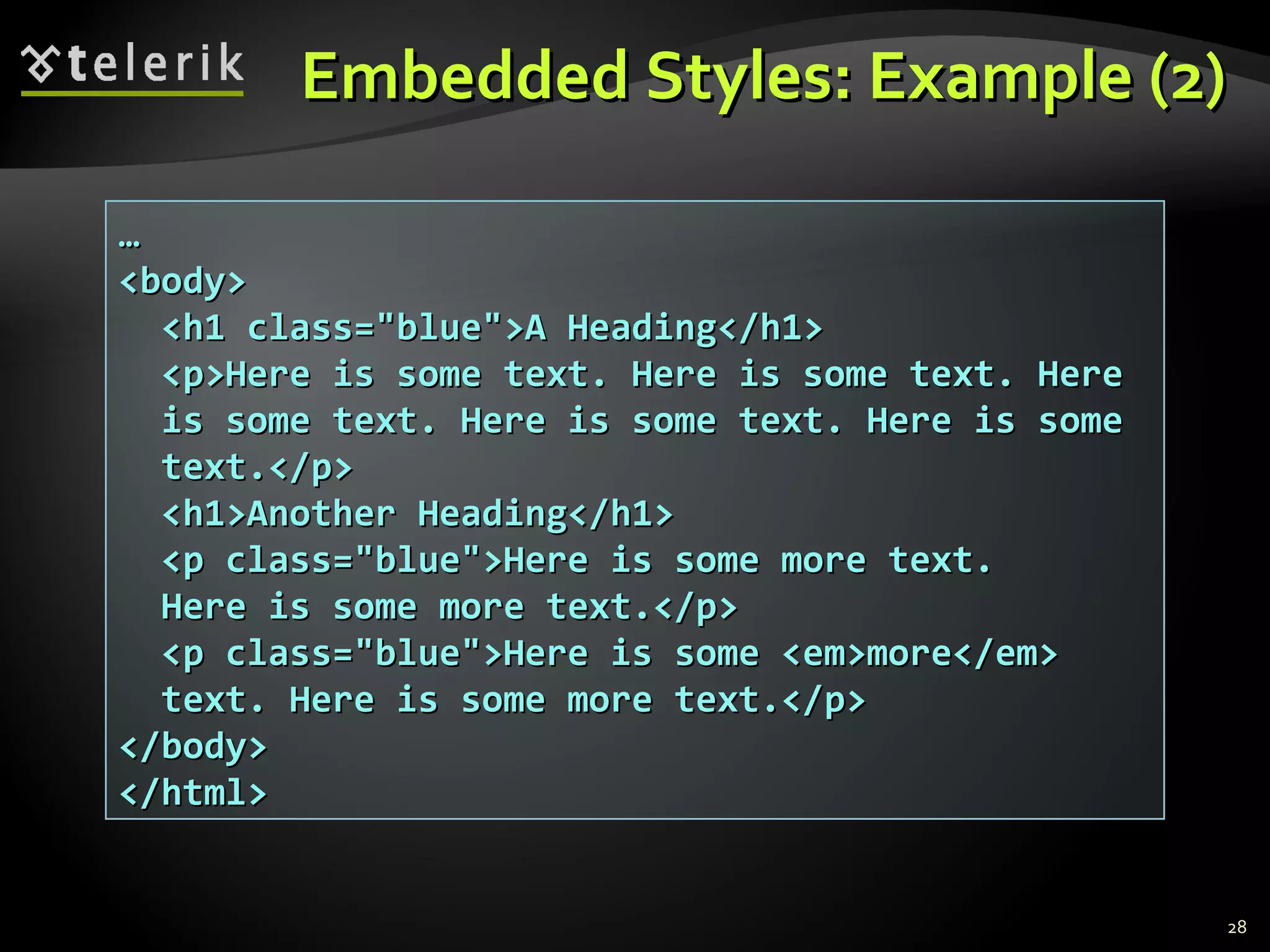
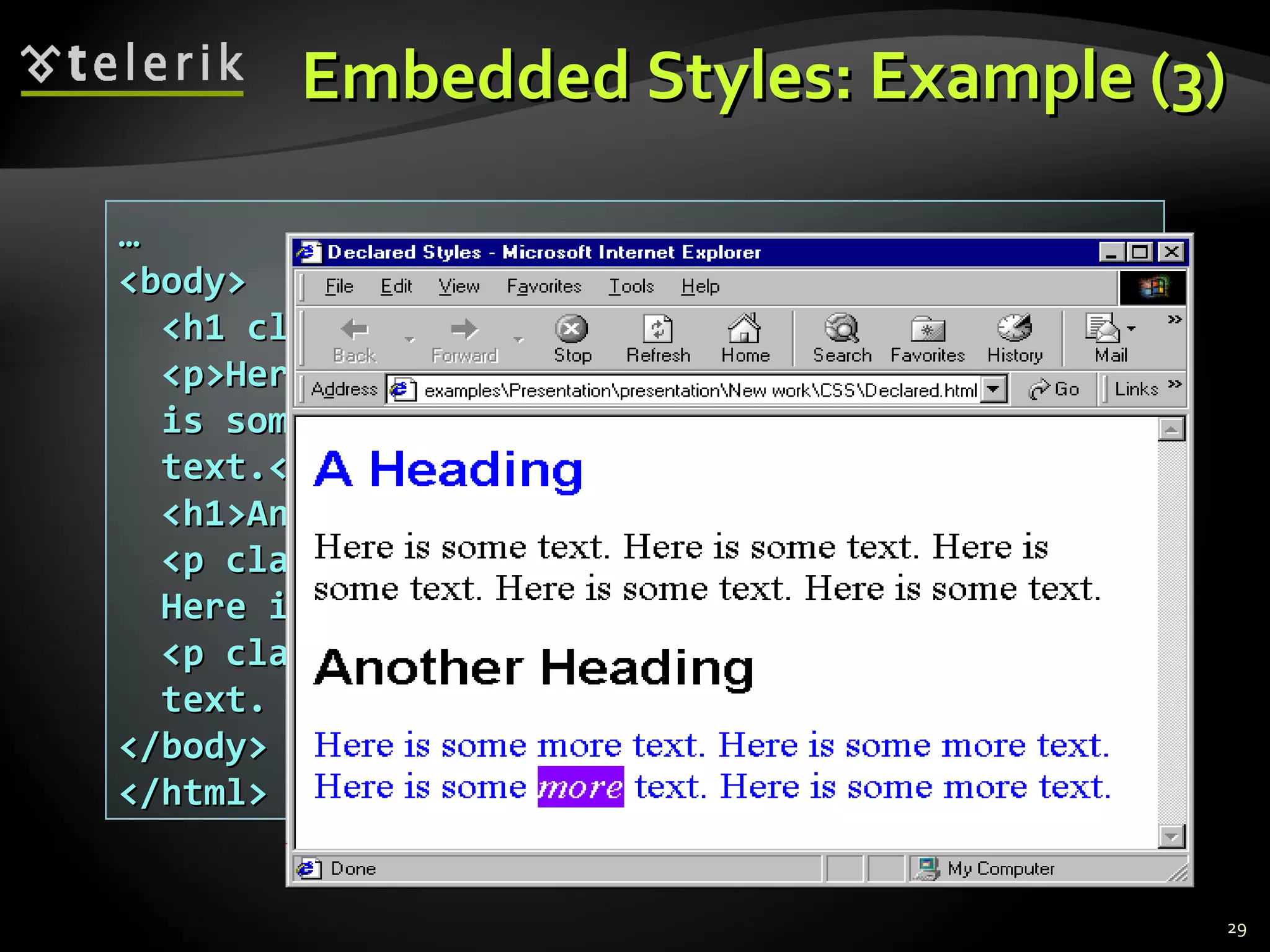
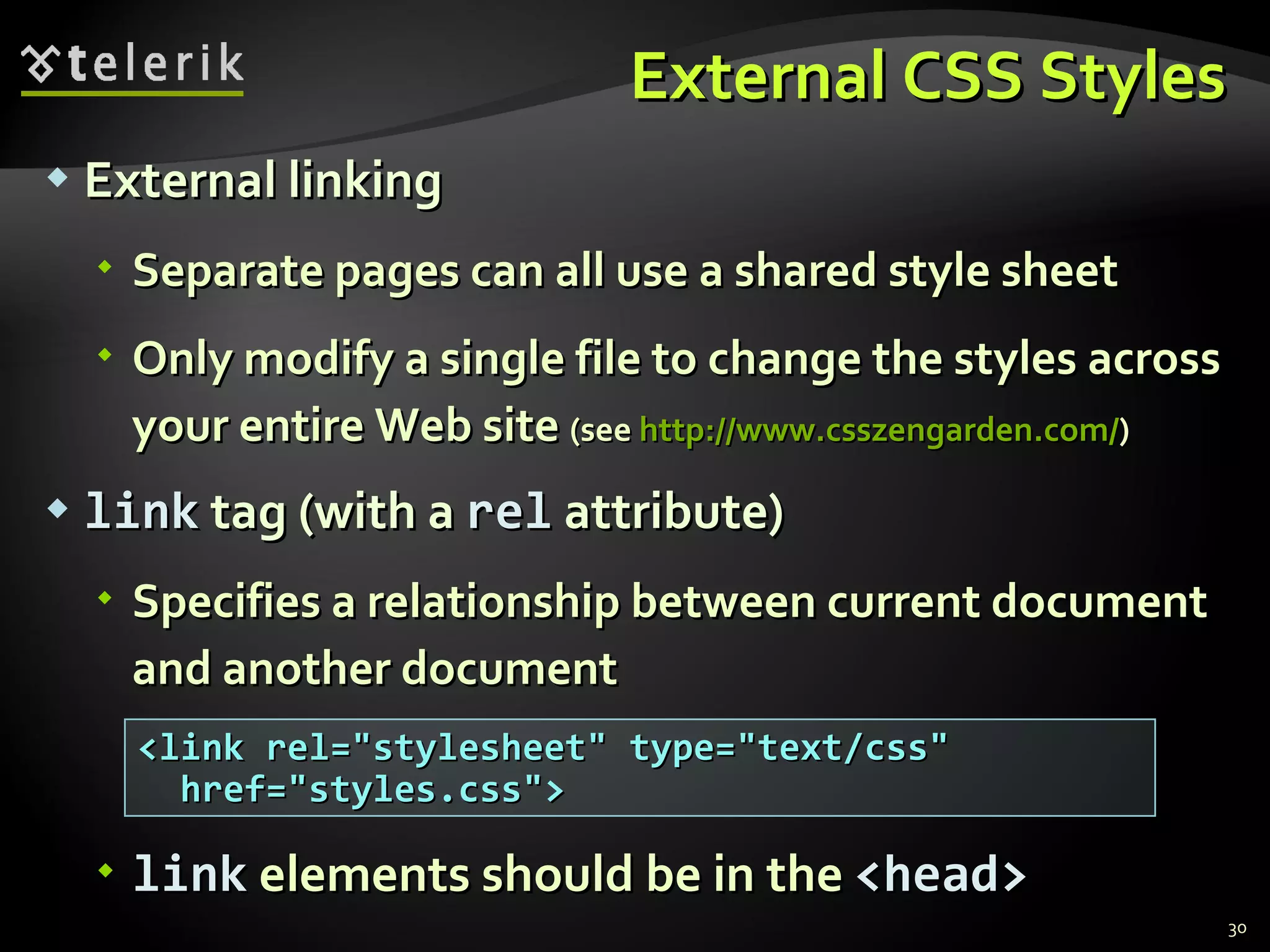
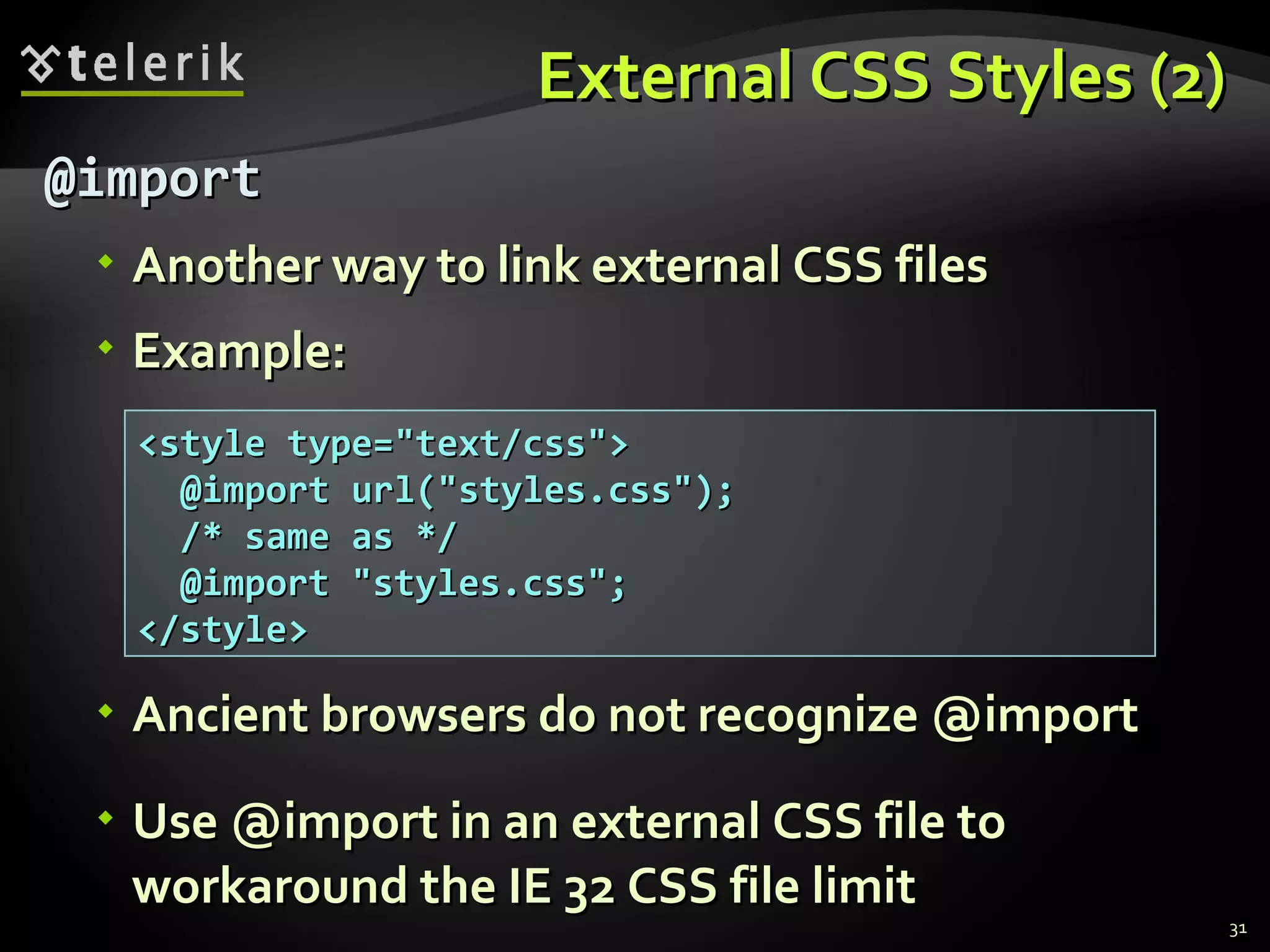
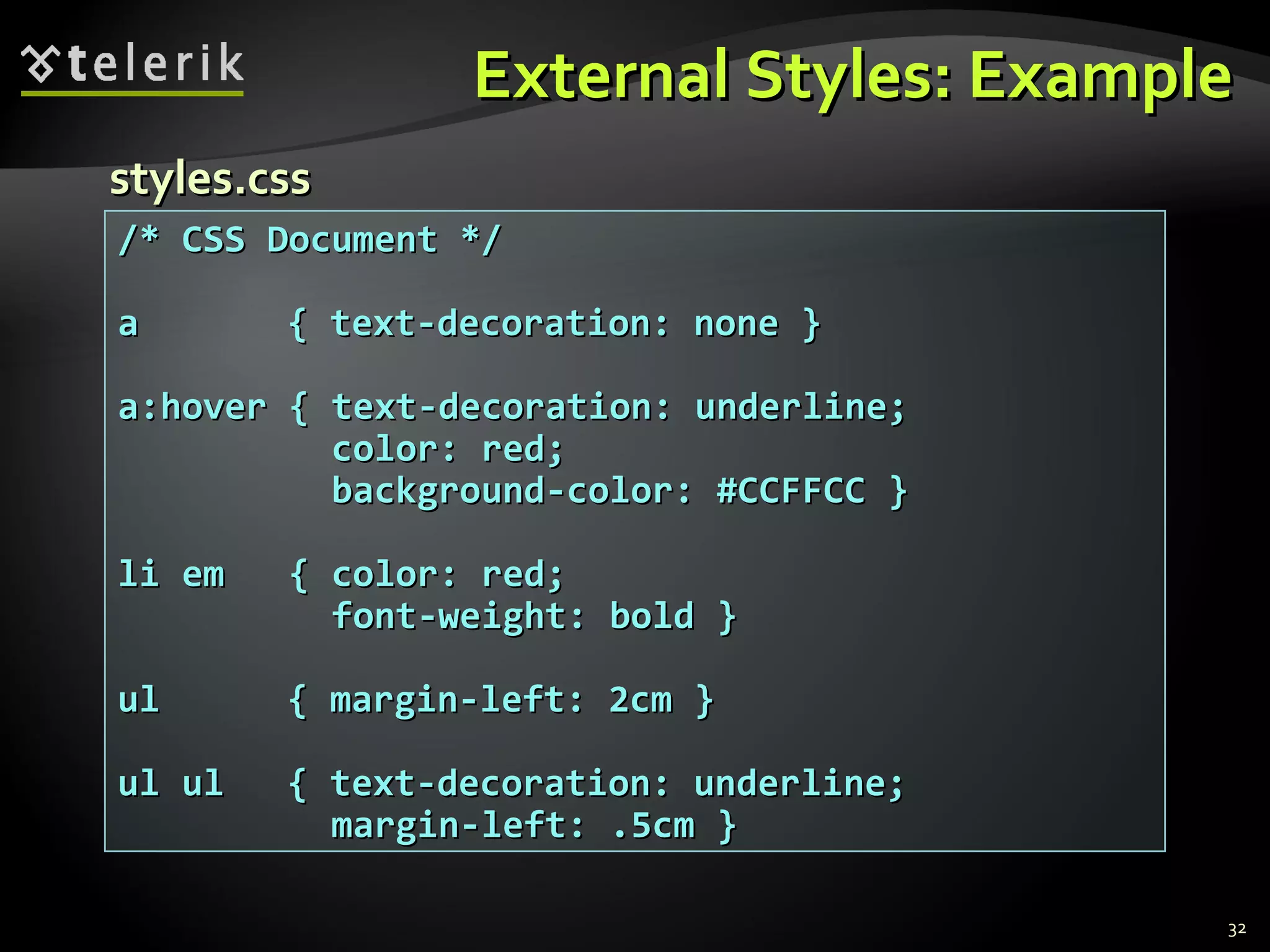
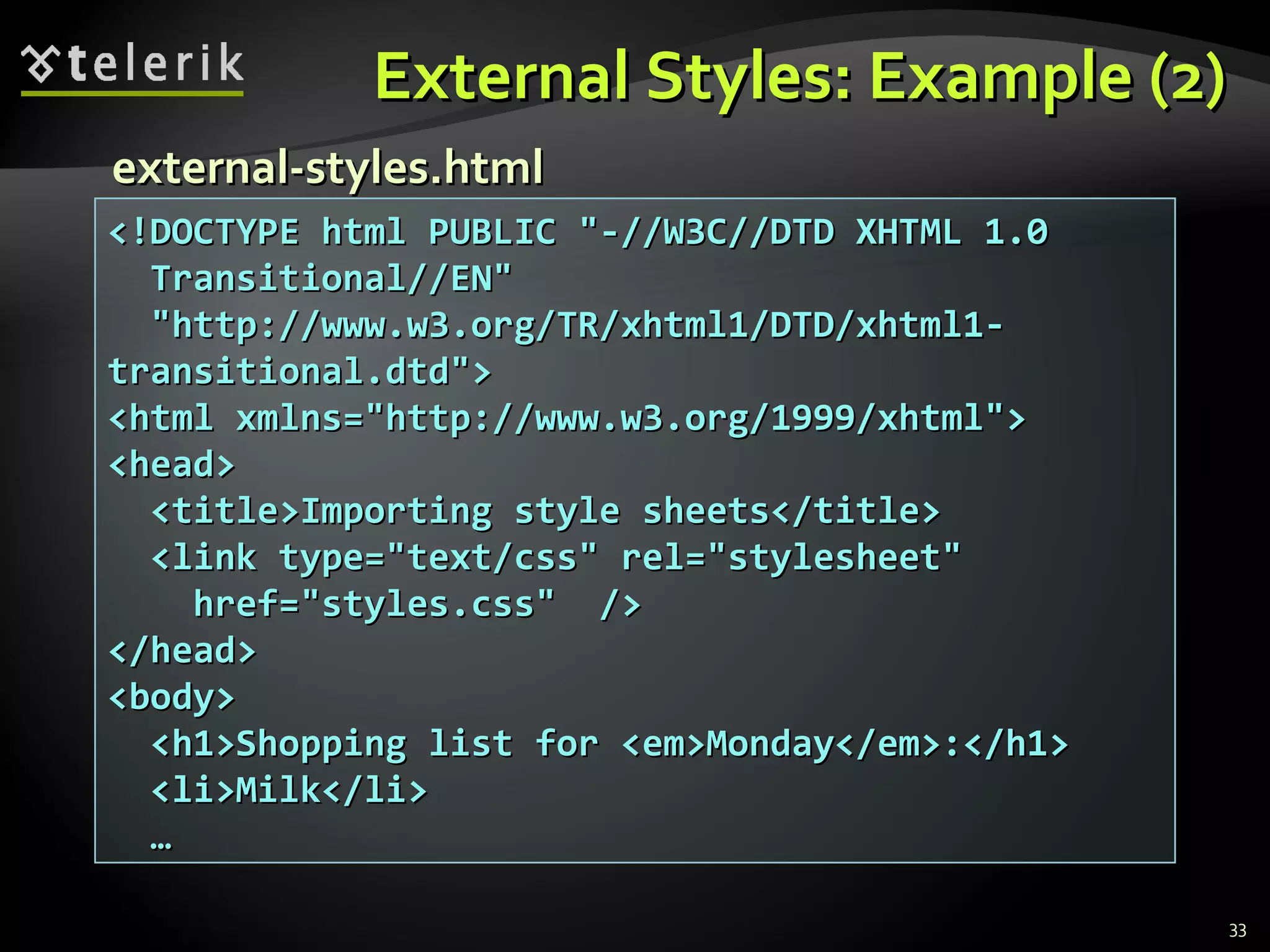
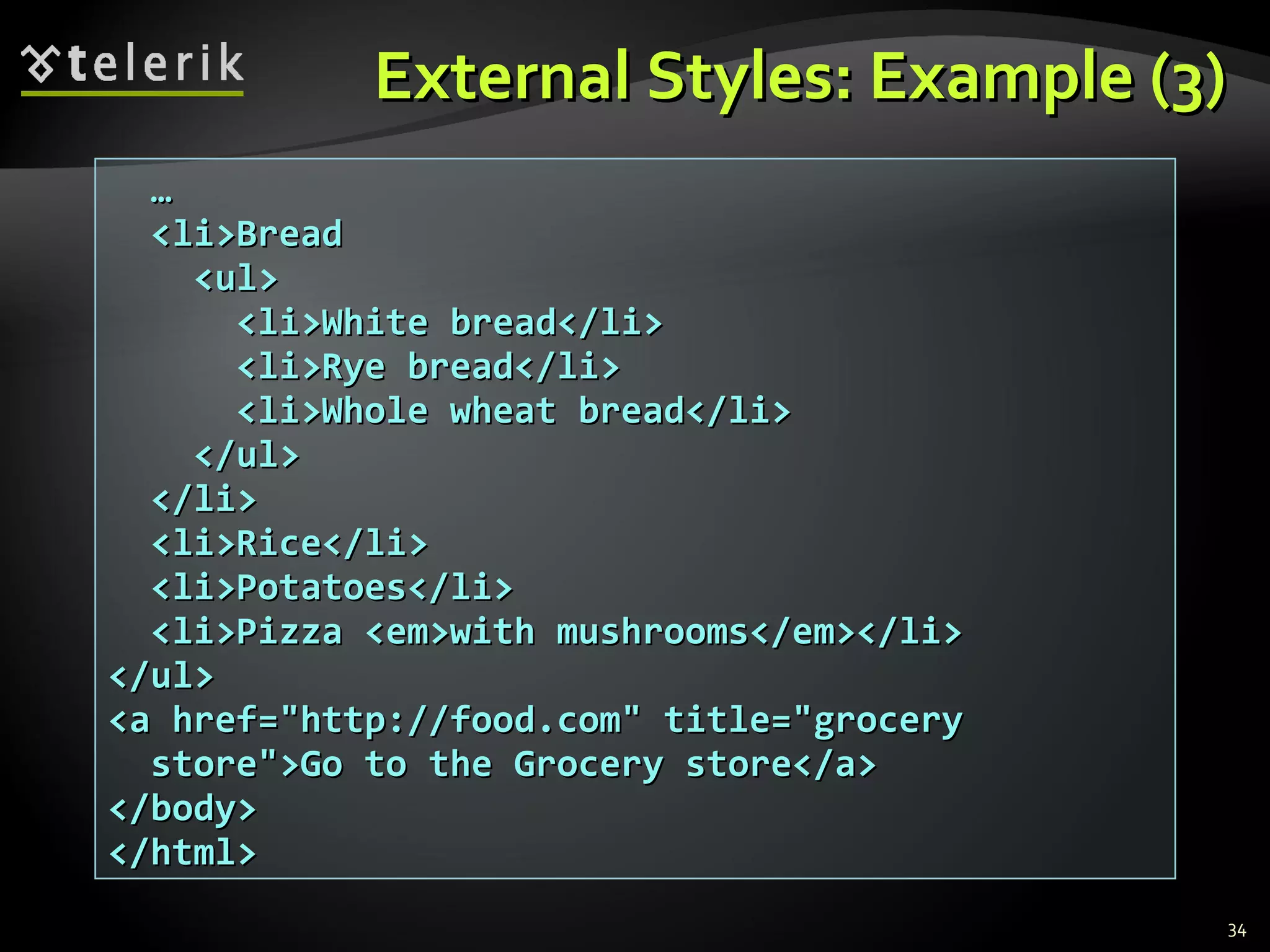
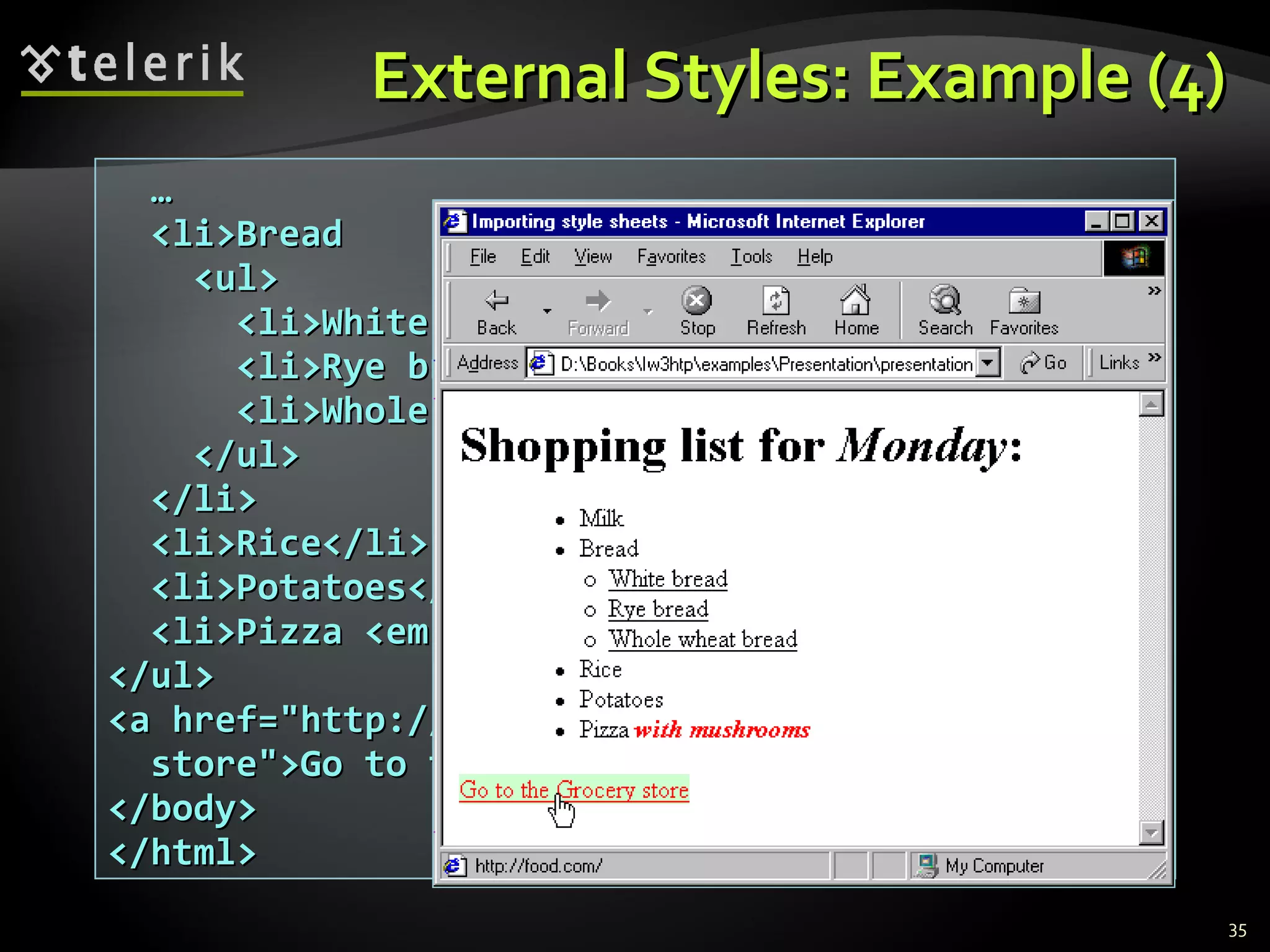
![Text-related CSS Properties color – specifies the color of the text font-size – size of font: xx-small , x-small , small , medium , large , x-large , xx-large , smaller , larger or numeric value font-family – comma separated font names Example: verdana , sans-serif , etc. The browser loads the first one that is available There should always be at least one generic font font-weight can be normal , bold , bolder , lighter or a number in range [ 100 … 900 ]](https://image.slidesharecdn.com/5-css-part-i-120206055657-phpapp02/75/CSS-Part-I-36-2048.jpg)
